#Lisboa Story Centre
Explore tagged Tumblr posts
Text
Lisboa Card
Com o seu cartão Lisboa Card, você terá acesso a mais de 50 atrações da capital portuguesa. Além disso, você poderá usar o transporte público de forma ilimitada e aproveitar ao máximo a sua viagem. Atrações incluídas As atrações mais populares incluídas são: Mosteiro dos Jerónimos. Experiência Pilar 7. Palácio Nacional de Mafra. Lisboa Story Centre. Museu Nacional de Arte Antiga. Sintra Mitos e…
0 notes
Text












I am thrilled to be part of the CENTRE COURT FESTIVAL in Cologne! This incredible event is organized by Rochus Aust and Verena Barié – a huge thank you to both of them. Here are some photos from the pre-show montage.
Presenting the Negentropy project in a three-story church tower was a challenging yet fascinating experience. We transformed the space into a multimedia opera installation with multichannel and interactive media, inviting the audience to follow us across the three different floors. This vertical exploration added a unique narrative dimension to our performance.
"NEGENTROPIA: The Last Man in the Wasteland" is a post-techno operatic journey through a post-apocalyptic world, where music, noise, and immersive soundscapes blend. Directed by Hugo Paquete, this performance will take place at LTK4 · Klangbasierte Künste Köln: Centre Court Festival der Klangbasierten Künste (Köln, Deutschland) as a site-specific adaptation.
Our exploration delves into radical ecology, astronomy, science, mysticism, and death, examining the limits of the self in the face of the abyss. The performance is a technological cathartic ritual, where myth, transcendence, and ritual create a space for confronting the apocalyptic with an aesthetic that crosses disciplines.
This immersive experience challenges the audience to confront the limits of the self amidst impending catastrophe.
This project immerses us in myth, transcendence, and ritual, challenging the audience to confront the limits of the self in the interzone of impending catastrophe.
Artistic Direction, Concept, Musical Direction and Composition, Performance and Dramaturgy: Hugo Paquete
Acting, Singing, and Performance: Rui Baeta.
Costumes, Props, Set, and Lighting: Absonus Lab Team
Hardware Design: Christopher Chris Zlaket
Software Design: David Stingley
Production: Absonus Lab
Important to mention:
The project is funded by the Direção Geral das Artes (Dgartes) and República Portuguesa / Cultura. It also has the institutional support of the following entities: Planetário do Porto – Centro Ciência Viva, Lisboa Incomum, Escola Superior Artística do Porto (ESAP), Universidade do Algarve, Centro de Investigação em Artes e Comunicação (CIAC), Artech Internacional, ACE: Teatro do Bolhão, LTK4: Center Court Festival, Maus Hábitos - Espaço de Intervenção Cultural and Museu da Música Mecânica.
#hugo paquete#noise#sound art#new media#music#sound#composition#art#performance#opera#Negentropy#Absonuslab
0 notes
Text
Bienvenus à Lisboa !
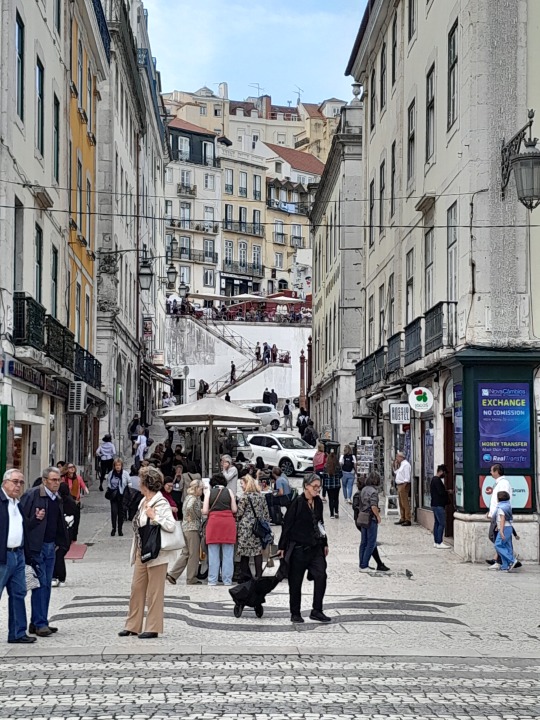
Mardi 24, mercredi 25 octobre, nous nous installons à Estoril, situé au nord ouest de Lisbonne, à 25 minutes en TER. Nous prendrons ce moyen de transport chaque jour pour rallier la capitale, dans laquelle il est impossible de circuler ou de garer sa voiture.
En bons français gourmands que nous sommes, à l'aller comme au retour, nous franchissons régulièrement le seuil de Time Out Market, vaste espace dédié à la nourriture, situé dans Mercado da Ribeira. Nous pouvons nous installer sur de grandes tablées partagées pour simplement boire un verre ou se restaurer.
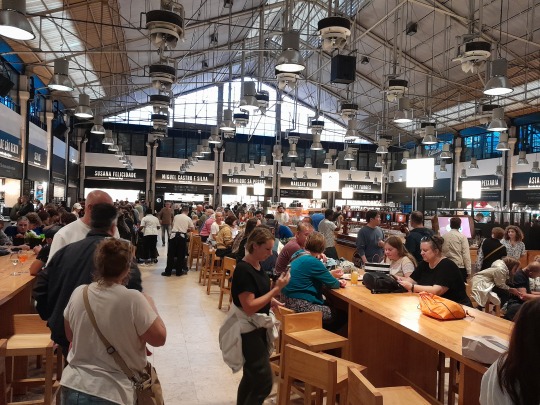
Nous avons adoré cet endroit, le concept est génial, nous y avons pris l'apéritif, un autre jour dégusté une excellente cuisine portugaise et partagé des discussions sympathiques avec des anglais…
Nous débutons le parcours de visite par la fameuse Praça do Comercio, l'une des plus grandes d'Europe dans l'axe de l'Arc de Triomphe et ouverte sur le Tage.
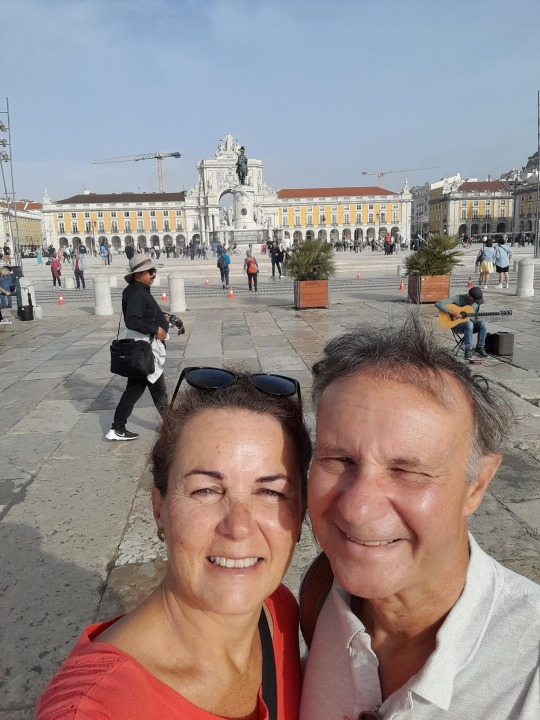
Lisbonne est faite de collines qui permettent des échappées sur les quartiers : Baixa, Chiado, Rossio, Alfama...
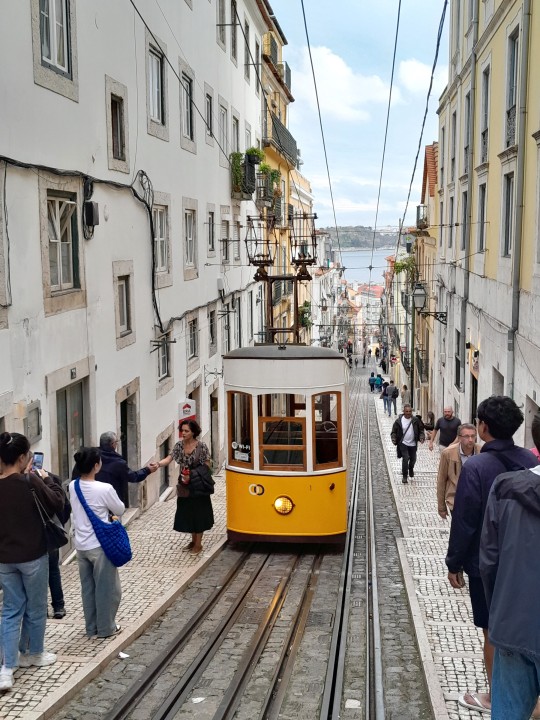

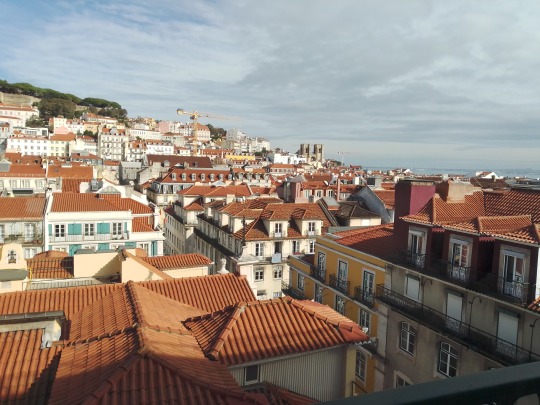
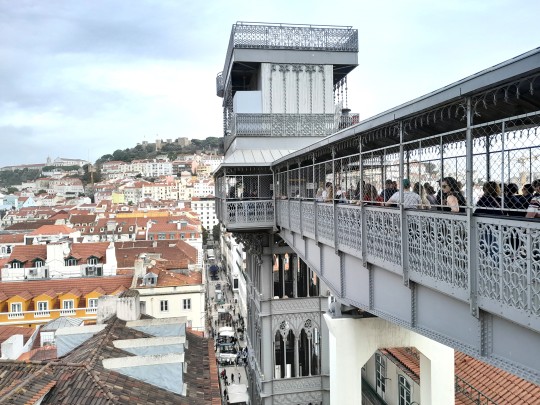
Il y a un nombre incroyable de musées à Lisbonne et nous sommes obligés de faire une sélection. Le premier jour, nous choisissons le Lisboa Story Center, qui raconte l'histoire de Lisbonne depuis ses origines et sa reconstruction après le tremblement de terre de 1755, avec un simulateur.
Le second jour, nous enchainons avec le musée Centre d'interprétation de la morue.


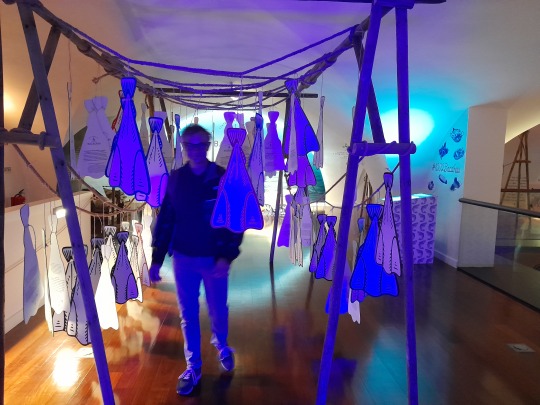
A Lisbonne, il y a aussi de nombreux jardins, nous en avons parcouru certains, comme le Jardim Botanico.
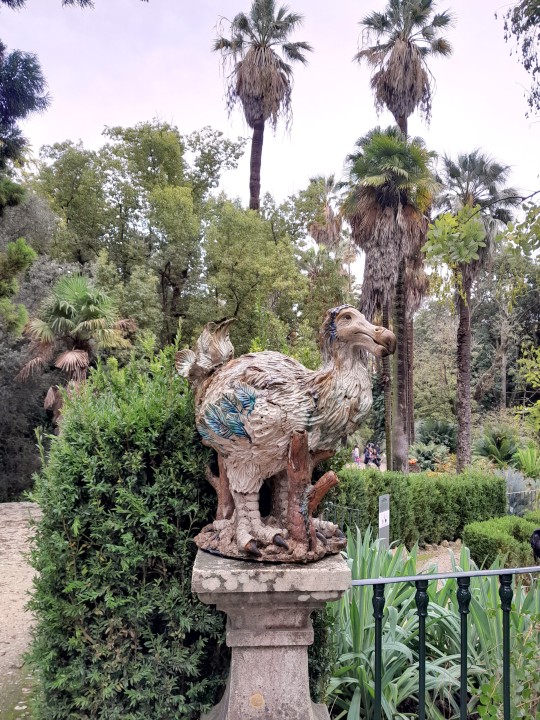
Belle visite et dodo !
Le retour à Estoril du premier jour est un peu agité, car il fait nuit, nous nous trompons 2 fois de station et pour la troisième, nous nous trompons de sens…
Jeudi 26 et vendredi 27 octobre : nous nous rendons à Belèm pour visiter l'exceptionnel Mosteiro do Jeronimos, pas de chance, c'est jour de grève au Portugal dans la fonction publique! Qu'à cela ne tienne, nous fonçons jusqu'au Museu Berardo, à côté, qui vient d'être remembré et n'ouvrira ses portes que le soir même… Après ces déconvenues, nous nous dirigeons vers les Docks, qui se situent sous le célèbre Ponte du 25 avril.
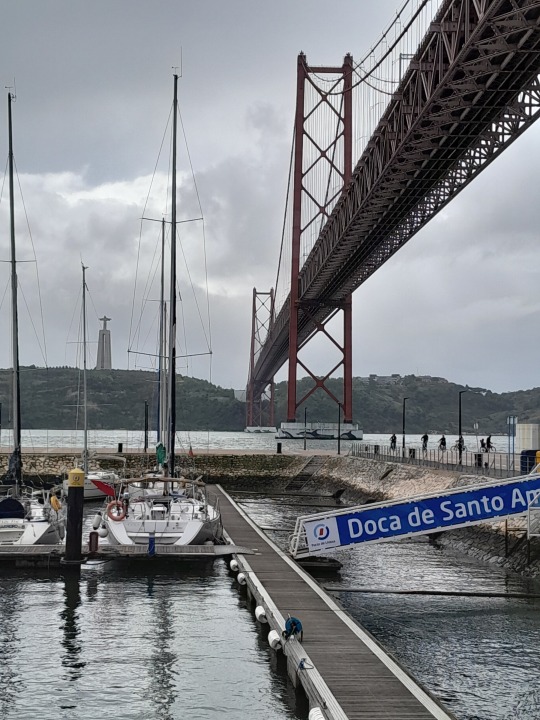
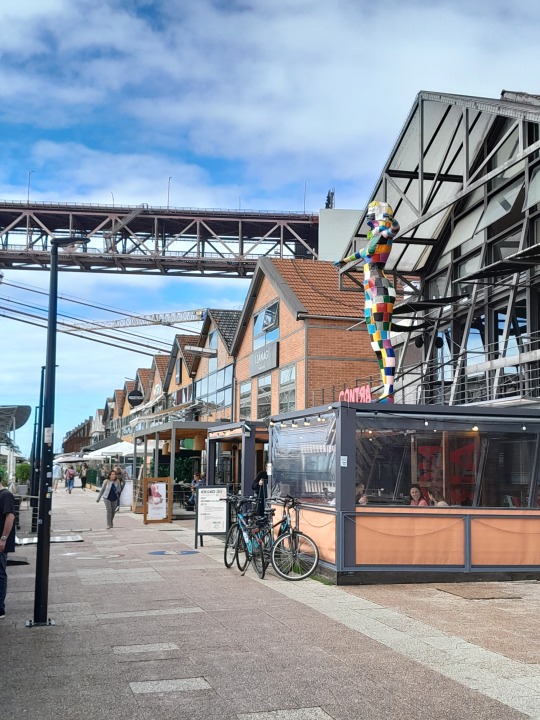

Puis nous rejoignons L.X. Factory, qui sont aussi d'anciens docks réaménagés : des boutiques, une librairie, des restaurants…
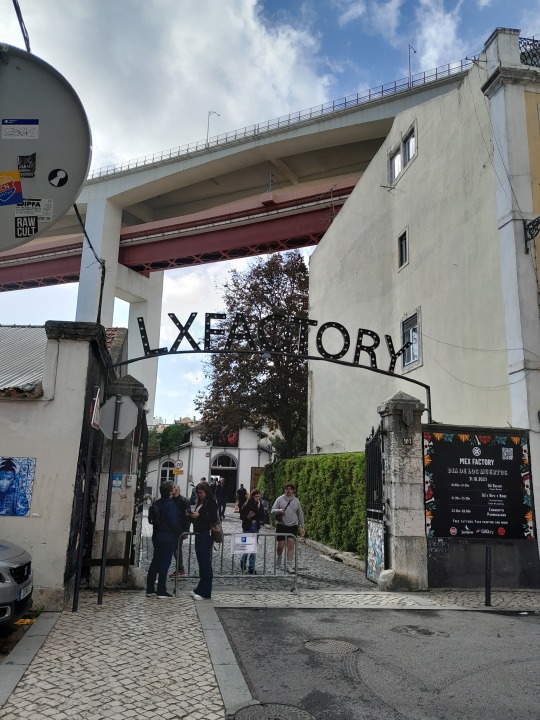
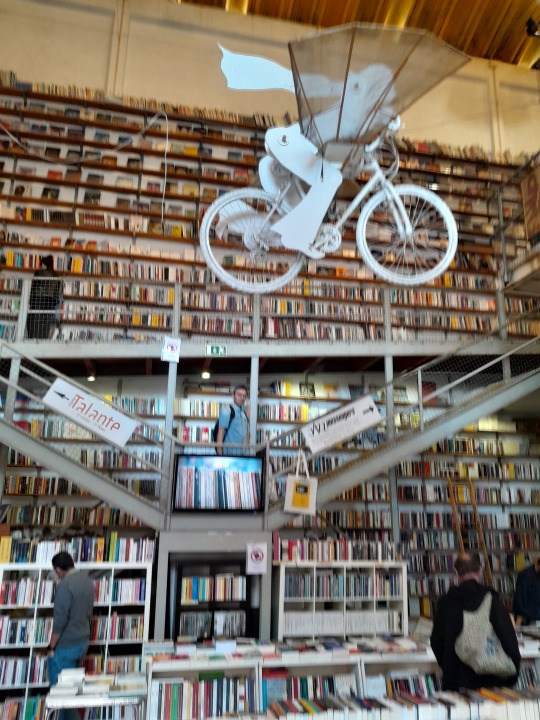
Et nous dégustons le meilleur gâteau au chocolat du monde !!! Chez Landeau.
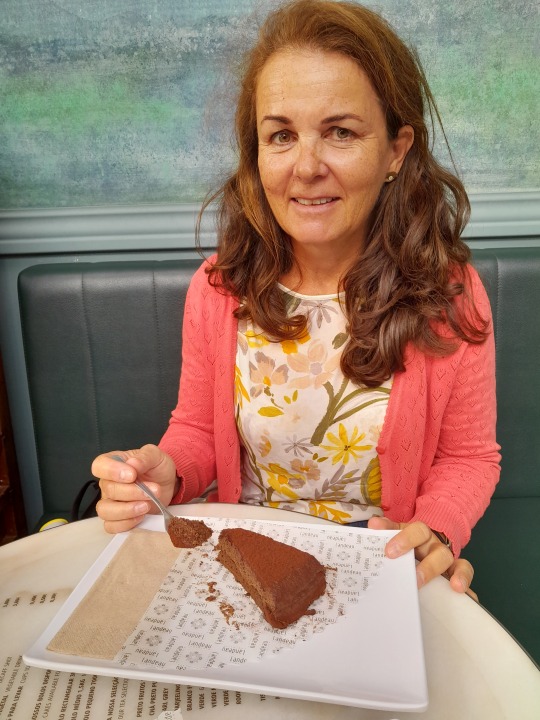
Incroyable, si, si!!
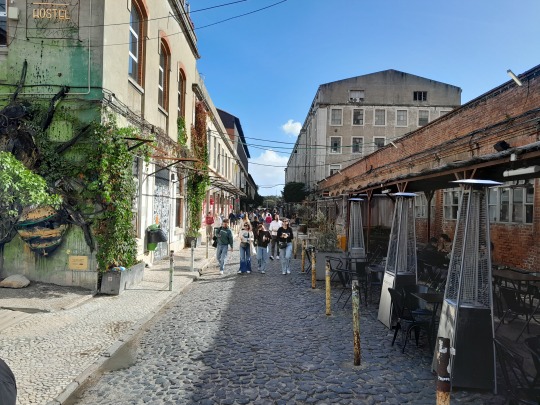
Nous terminons au Museu Arte Deco, ancienne demeure qui réunit une collection exceptionnelle de meubles et objets des époques Art Nouveau, Art Déco.
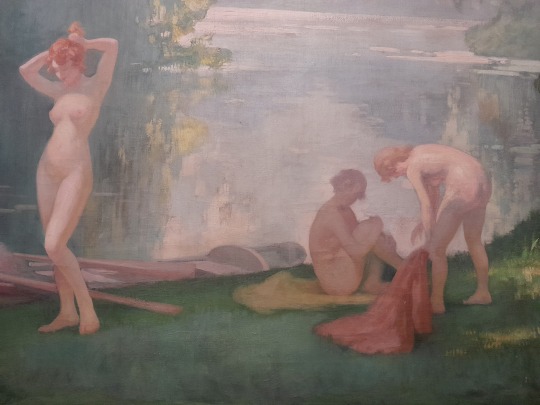

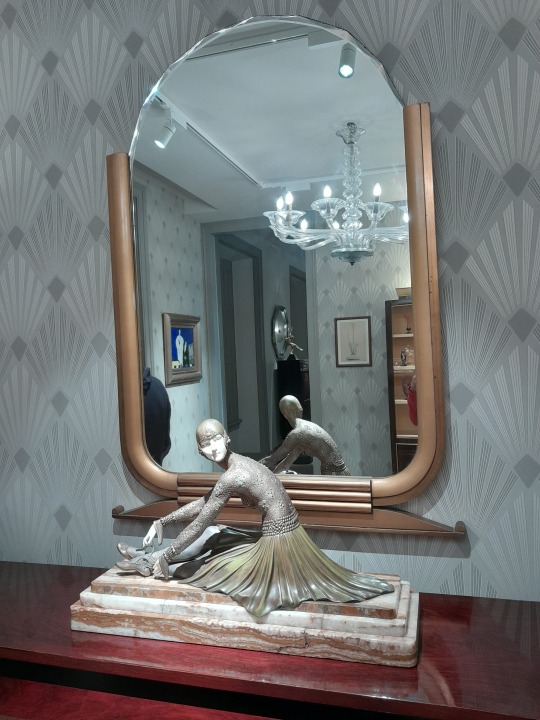
Até brèvé...
1 note
·
View note
Text
Lissabon: Tipps für den Museumsbesuch in der Stadt am Tejo

Inhalt:QUAKE – Lisbon Earthquake Center Anschrift Webseite Öffnungszeiten und Eintrittspreise Calouste Gulbenkian Museum Calouste Gulbenkian Museum Webseite Öffnungszeiten und Eintrittspreise Anfahrt Lisboa Story Centre – Erinnerungen einer Stadt Lisboa Story Centre Öffnungszeiten und Eintrittspreise Centro Interpretativo da História do Bacalhau – die Geschichte des Kabeljaus Centro Interpretativo da História do Bacalhau Öffnungszeiten und Eintrittspreise MAAT: Museu de Arte, Arquitetura & Tecnologia maat — Museum für Kunst, Architektur und Technologie Koordinaten Öffnungszeiten und Eintrittspreise Anfahrt Bus Straßenbahn Bahnhof Boot Wissensmuseum Pavilhão do Conhecimento Wissensmuseum Pavilhão do Conhecimento Öffnungszeiten und Eintrittspreise Anfahrt U-Bahn Zug Bus Auto Núcleo Arqueológico da Rua dos Correeiros (NARC) Telefon Website Adresse Museu do Tesouro Real Öffnungszeiten und Eintrittspreise Webseite Anschrift Auch interessant Lissabon zählt unter Touristen zu den beliebtesten Urlaubszielen für Citytrips. Das liegt nicht allein an dem ganzjährig milden Klima, den schönen Stränden oder der historischen Architektur. Denn es gibt in Lissabon auch jede Menge spannende und wertvolle Museen und Interpretationszentren, die Besucher in ihre Räume locken. In den über 40 verschiedenen Museen und Zentren ist für jeden Geschmack etwas dabei. Wir haben einige für Dich ausgesucht.
QUAKE – Lisbon Earthquake Center
Im Jahr 1755 ereilte Lissabon ein heftiges Erdbeben, das die Stadt für immer veränderte und nachhaltig prägte. Im neuen QUAKE – Lisbon Earthquake Center, im Stadtviertel Belém, wird diese Tragödie unter anderem durch Erdbebensimulatoren und immersives 4D-Erlebnis erlebbar gemacht. Durch zehn Räume führt die anderthalbstündige Tour, in denen Besucher durch das ehemalige Lissabon spazieren und auch erfahren, wie Erdbeben und Tsunamis entstehen und warum die portugiesische Hauptstadt 1755 davon so betroffen war. Die Inhalte des Centers sind auf Portugiesisch, Englisch, Spanisch und Französisch verfügbar. Anschrift R. Cais de Alfandega Velha 36, 1300-598 Lisboa Webseite https://lisbonquake.com/ Öffnungszeiten und Eintrittspreise Das Center ist Dienstag bis Donnerstag von 14 bis 19 Uhr und Freitag bis Montag von zehn bis 19 Uhr geöffnet. Der Eintrittspreis variiert je nach Uhrzeit, Tag und Saison. Erwachsene zahlen zwischen 21 und 31 Euro pro Person, Kinder von sechs bis 12 Jahren zahlen zwischen 14,50 und 21,50 Euro pro Person.
Calouste Gulbenkian Museum
Das Gulbenkian-Museum ist ein bedeutendes Kunstmuseum in Lissabon und nimmt die Besucher in seinen zwei Sammlungen mit auf eine Zeitreise vom alten Ägypten bis zur Gegenwart. Die außergewöhnliche Sammlung des Stifters Calouste Gulbenkian, der einst in Lissabon Asyl fand und zum Dank seine Kunstwerke vererbte, umfasst insgesamt über 6.000 Werke und Kunstobjekte von der Antike bis hin zu Arbeiten von Künstlern aus dem frühen 20. Jahrhundert, die Calouste Gulbenkian im Laufe seines Lebens gesammelt hat. Darunter befinden sich ägyptische, griechisch-römische und islamische Kunst, Kunst aus dem fernen Osten, Münzsammlungen, Gemälde, Skulpturen und europäisches Kunsthandwerk. Werke großartiger Künstler, wie Rubens, Rembrandt, Turner oder Degas und die größte Juwelensammlung von René Lalique sind nur einige Beispiele für die Kunstobjekte, die in einer der besten Privatsammlungen der Welt bestaunt werden können. Das Besondere an diesem Museum ist auch seine Bauweise. Die Architekten haben sich bei der Planung an den Ausstellungsstücken orientiert. Es wirkt so, als sei das Museum um die Exponate herum gebaut worden. Calouste Gulbenkian Museum Av. de Berna 45A, 1067-001 Lissabon Webseite https://gulbenkian.pt/museu/willkommen/ Öffnungszeiten und Eintrittspreise Das Museum ist von 10 bis 18 Uhr geöffnet. Dienstags ist es geschlossen. Der Eintritt kostet 10 Euro pro Person. Ermäßigungen: 50 Prozent für Besucher bis 29 und über 65 Jahre 20 Prozent für Inhaber von Lisbon Card, Lisbon Sightseeing, Ciência Viva Card Kostenloser Eintritt sonntags nach 14 Uhr Anfahrt U-Bahn Stationen S. Sebastião (blaue und rote Linie) oder Praça de Espanha (blaue Linie) Busse 713, 716, 726, 742, 746, 756

Calouste Gulbenkian Museum / ©Turismo de Lisboa
Lisboa Story Centre – Erinnerungen einer Stadt
Das Lisboa Story Centre am Platz Terreiro do Paço widmet seine Dauerausstellung ganz der Historie der Stadt. In der interaktiven Ausstellung erleben Besucher eine virtuelle Reise in die Vergangenheit Lissabons – von der Entstehung bis zur Gegenwart. Die jeweiligen Epochen werden in verschiedenen Bereichen präsentiert und dabei von Audio- und Videobeiträgen begleitet. Kernstück der Ausstellung: Große und kleine Besucher können das Erdbeben von 1755 „erleben“, welches im Theatersaal dargestellt wird. Außerdem erfahren Gäste anhand eines Modells, wie die Stadt vor dem großen Erdstoß ausgehen hat. Der Rundgang dauert eine Stunde. Besuchern steht hierfür ein Audioguide in neun verschiedenen Sprachen zur Verfügung – auch auf Deutsch, er im Eintrittspreis enthalten ist. Lisboa Story Centre Terreiro do Paço, 78-81 1100-148 Lisboa Öffnungszeiten und Eintrittspreise Das Lisboa Story Centre ist täglich von 10 bis 20 Uhr geöffnet. Letzter Eintritt 18 Uhr. Der Eintritt kostet 6,50 Euro pro Person, Kinder von 6 bis 15 Jahre zahlen 3 Euro, Studenten und Senioren 4,50 Euro. Für den gemeinsamen Besuch des Lisboa Story Center und des Centro Interpretativo da História do Bacalhau gibt es einen Preisnachlass: Erwachsene zahlen insagesamt 9 Euro, Kinder von 6 bis 15 Jahre zahlen 4 Euro.

Centro Interpretativo da História do Bacalhau / ©Turismo de Lisboa
Centro Interpretativo da História do Bacalhau – die Geschichte des Kabeljaus
Das Interpretationszentrum zur Geschichte des Stockfischs erzählt die Geschichte der Seefahrt nach Neufundland und wie es dazu kam, dass der Bacalhau seinen besonderen Platz in der gastronomischen Tradition Portugals einnimmt. In verschiedenen Ausstellungsbereichen können Besucher den Beginn der Odyssee eines ganzen Volkes beobachten und wie es sich „am Ende der Welt ins Meer stürzt“. Welche Gefahren die Fischer auf der Jagd nach dem Kabeljau damals überstehen mussten und wie einsam sie sich manchmal auf hoher See fühlten, erleben die Besucher am eigenen Leib bei einer simulierten Fahrt auf einem traditionellen Dory-Boot. Zudem lernen sie die Arbeitsabläufe an Bord kennen und erfahren, was es mit dem Mythos des „treuen Freundes“ auf sich hat. Doch die Ausstellung informiert nicht nur über die Vergangenheit, sondern auch über die Zukunft des Kabeljaus – über nachhaltige Fischerei, den Verzehr sowie über neue Zubereitungsmethoden des Fisches. Beleuchtet werden neben den wirtschaftlichen Aspekten auch die kulturellen und kulinarischen Aspekte dieser für Portugal so wichtigen Fischart.
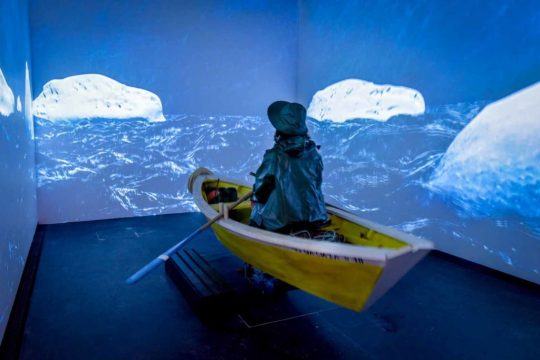
Centro Interpretativo da História do Bacalhau / Foto: Turismo de Lisboa / www.visitlisboa.com Weiter begeben sich die Besucher im Saga-Raum auf eine gedankliche Reise in die Vergangenheit und haben hier die Möglichkeit, sich in einem riesigen Buch die legendären und fantastischen Erzählungen der portugiesischen Fischerei im Nordatlantik anzusehen. Bemerkenswert ist auch die Ausstellung ausgewählter Objekte aus der Sammlung des Schifffahrtsmuseums von Ílhavo, die beim Kabeljaufischen verwendet werden. Zudem ist jede Menge Interaktion an verschiedenen Stationen der Ausstellung gefragt: So können die Gäste beispielsweise ihr ultimatives Rezept für Kabeljau im neuen Informationszentrum abgeben, an Bord eines Dorys fotografiert werden oder die Textur eines Kabeljaus erspüren. Im zum Museumskomplex gehörenden Restaurant „Terra Nova“ können sie sich schließlich den Fisch auf der Zunge zergehen lassen, denn dieser ist hier der absolute Star der Speisekarte. Centro Interpretativo da História do Bacalhau Terreiro do Paço, Torreão Nascente, 1100-148 Lisboa Öffnungszeiten und Eintrittspreise Das Interpretationszentrum ist täglich von 10 bis 19 Uhr geöffnet, letzter Einlass 18:30 Uhr. Der Eintritt kostet 4 Euro pro Person, Kinder von 6 bis 15 Jahre zahlen 2 Euro. Senioren und Studenten 3 Euro. Für Gruppen gibt es ermäßigte Preise.

Dem Kabeljau auf der Spur: Neues Informationszentrum in Lissabon eröffnet / Foto: Turismo de Lisboa / www.visitlisboa.com Lies, was Du mit Kindern in Lissabon unternehmen kannst
MAAT: Museu de Arte, Arquitetura & Tecnologia
Das Gebäude mit seiner einmaligen Architektur direkt am Fluss ist das Zuhause für zeitgenössische Kunst, Architektur und Technologie: Das Museu de Arte, Arquitetura e Tecnologia (MAAT). Es liegt im Stadtteil Belém, an der Mündung des Tejo, neben einem ehemaligen Elektrizitätswerk und ergänzt die hier schon ansässigen Museumsbauten zu einer Kultur- und Freizeitfront am Ufer des Tejo. Seine Nachbarn sind das Kulturzentrum Belém und das Kutschenmuseum. Betritt man das Museum, so landen Besucher unmittelbar in einem ovalen, zweigeschossigen Galerieraum – mit seinen 1.200 Quadratmetern der größte des Museums. Eine Treppe und eine Rampe fassen den Raum ein und führen hinab ins Erdgeschoss, von wo aus der Rundgang durch die wechselnde Ausstellung beginnt – hier stellen nationale und internationale zeitgenössische Künstler aus. Darüber hinaus bietet das begehbare Dach eine tolle Aussicht über den Tejo.
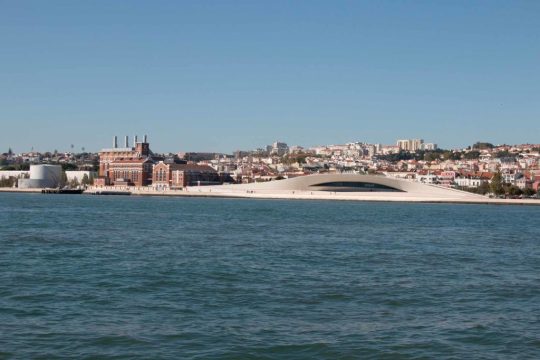
maat — Museum für Kunst, Architektur und Technologie in Lissabon / Foto: Ingo Paszkowsky maat — Museum für Kunst, Architektur und Technologie Av. Brasília, Belém 1300-598 Lissabon Koordinaten Breitengrad 38º41'44.52 N Längengrad 9º11'44.30 W Öffnungszeiten und Eintrittspreise Das Museum ist von 12 bis 20 Uhr geöffnet, dienstags ist es geschlossen. Der Eintritt für Erwachsene kostet 9 Euro. Kinder ab 12 Jahre zahlen 6 Euro, Studenten und Rentner ebenfalls 6 Euro. Eine erwachsene Person mit zwei Kindern ab 12 Jahre zahlen zusammen 17 Euro. Jeden ersten Sonntag im Monat gibt es freien Eintritt. Anfahrt Bus 201, 714, 727, 751 - Altinho Anschlag (MAAT) 728 - Belém River Station Haltestelle Straßenbahn 15E, 18E - Altinho Anschlag (MAAT) Bahnhof Belém Station (Cascais Line) Boot Belém River Station (Belém - Porto Brandão – Trafaria)
Wissensmuseum Pavilhão do Conhecimento
Interaktiv und lebendig werden im Museum Pavilhão do Conhecimento – Ciência Viva verschiedene Disziplinen moderner Wissenschaft und Technologie vermittelt. Ziel des interaktiven Museums ist es, Wissen zu fördern sowie die wissenschaftliche und technologische Kultur zu verbreiten. Dazu werden Ausstellungen und Aktivitäten zu verschiedenen Themen angeboten, die die Besucher auf aktive und spielerische Art und Weise erkunden können. Besucher lernen hier die Welt der Physik durch eine Reihe von Versuchen kennen. Mehr als 300 interaktive Module stehen hierfür bereit. In den Ausstellungen und Veranstaltungen erhalten Kinder und Erwachsene spielerisch Zugang zu der Vielfalt verschiedener Wissensgebiete. So tauchen Besucher beispielsweise in der Ausstellung „Fishanário“ in die Tiefe des Meeres ein und lernen die Bewohner des Ozeans kennen. Diese riesige Meereswelt zu kennen, zu respektieren und zu schützen, ist für die Zukunft der Menschheit unerlässlich. Wissensmuseum Pavilhão do Conhecimento Largo José Mariano Gago, nº1 Parque das Nações 1990-073 Lisboa, Portugal Öffnungszeiten und Eintrittspreise Das Wissensmuseum ist dienstags bis freitags von 10 bis 18 Uhr geöffnet, am Wochenende von 11 bis 19 Uhr. Der Eintritt kostet 10 Euro pro erwachsene Person. Kinder von 3 bis 11 Jahren zahlen 7 Euro, von 12 bis 17 Jahren 8 Euro. Senioren 7 Euro. Es gibt eine Menge Rabatt-Möglichkeiten, z.B. 15 Prozent mit der Lisboa Card. Sieh Dich am besten auf der Webseite um, die Informationen in portugiesischer und englischer Sprache zur Verfügung stellt. Am 16. Mai, 25. Juli und 24. November gibt es freien Eintritt. Anfahrt U-Bahn Gare do Oriente - Rote Linie Zug Gare do Oriente Bus Die nächste CARRIS-Bushaltestelle ist „Oceanário Lisboa“ in Alameda dos Oceanos, die von den Bussen 26B und 728 bedient wird. Am Gare do Oriente findeest Du die Buslinien 400, 705, 708, 725, 728, 744, 750, 759, 782 und 794. Auto Parkmöglichkeiten in der Nähe: Parque da Doca, Parque do Casino – Alameda dos Oceanos oder Parque do Oceanário.
Núcleo Arqueológico da Rua dos Correeiros (NARC)
Mitten im Stadtzentrum, unweit des Arco da Rua Augusta gelegen, bietet das Museum eine archäologische Reise in Lissabons Vergangenheit an. Sie liegt unterhalb des Bankgebäudes der portugiesischen Universalbank Millennium bcp. Bei Grabungen in den Jahren 1991 und 1995 wurde das archäologische Feld erschlossen; seit dem Jahr 2015 ist es als nationales Kulturerbe gelistet. Es ermöglicht einen Zugang zu sämtlichen Besiedlungsphasen Lissabons – eine Zeitspanne von über 2500 Jahre. Bauliche Überreste und ausgegrabene Funde sind Zeitzeugen, die von der iberisch-punischen, römischen, westgotischen, islamischen, mittelalterlichen und pombalinischen Zeit berichten.
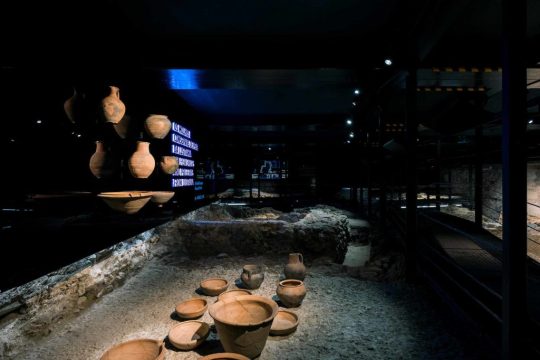
Vom Prolograum aus steigen die Besucher in die NARC: Vergangenheit hinab und folgen einem Steg, der das Grabungsfeld erschließt. / Copyright Atelier-Brückner / Giovanni Emilio Galanello Der Núcleo Arqueológico da Rua dos Correeiros (NARC) hat seit November 2021 eine neue, inhaltlich-immersive Gestaltung. Sie stammt von den Stuttgarter Szenografen ATELIER BRÜCKNER. Read the full article
#CalousteGulbenkian#CentroInterpretativodaHistóriadoBacalhau#Gulbenkian-Museum#LisboaStoryCentre#LisbonEarthquakeCenter#Lissabon#MAAT#Museen#MuseudoTesouroReal#Museum#NARC#PavilhãodoConhecimento#Portugal#QUAKE
1 note
·
View note
Text
Lisbon Vacation Travel Guide | Expedia
Lisbon Vacation Travel Guide | Expedia
Lisbon – Welcome to the capital of Portugal. Explore the hilly streets of this coastal city and take in the rich culture here. Check out the top spots to visit.
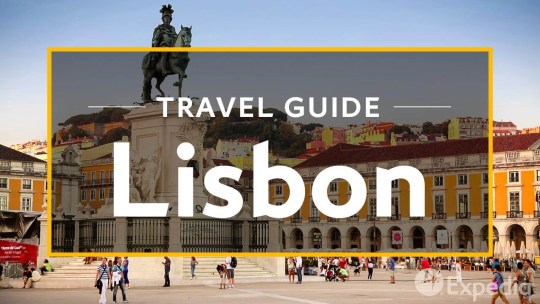
View On WordPress
#Adraga Beach#Almocageme#Boca do Inferno#Carmo Convent#Cascais Marina#Convento do Carmo & Museu Arqueológico#cvg#Fado Museum#Lisboa Story Centre#Lisbon#LX Factory#MAAT#Padrão dos Descobrimentos#Palace of the Marquises#portugal#Praia da Conceicao#Rainha Beach#Ribeira Beach#Rua Augusta Arch#Senhora do Monte Viewpoint#Time Out Market (Mercado da Ribeira)#Ursa Beach
0 notes
Text
What happened in Portugal in 1974 needs to happen in Russia.
Today, April 25th, is the 48th anniversary of the 1974 Portuguese Revolution. A group of junior and middle ranking officers in the Portuguese military overthrew a fascist dictatorship which had been in power over 40 years.
The Estado Novo régime came to power in the same era as Mussolini, Hitler, and Franco. However it had been less heavy handed than those other dictatorships; its first and longest lasting leader, António Salazar, was a fervent Catholic who was turned off by the “paganism” of his fellow pre-war dictators and ruled accordingly. Still there were secret police, limits on free speech and the press, and no genuinely fair elections.
By the mid 1970s, Portugal was the last European country to have a colonial empire. A non-stop series of wars in the colonies had taken a large toll on the country. Younger and more clear-thinking officers decided that a change in the country was long overdue.
BBC History Extra describes what happened.
In March 1974, General António de Spínola was dismissed from his position as deputy minister of the armed forces.
He had written a book in which he suggested that the Portuguese colonial wars should come to an end. He was critical of the current Portuguese regime, something that was regarded as heretical by Portugal’s right-wing establishment.
The Armed Forces Movement (MFA) was soon formed by dissident and low- ranking officers who supported Spínola. Captains within the armed forces were also unhappy with a law which would grant privileges to conscripted officers, to the resentment of professionally trained officers. The armed forces’ support for the government was rapidly deteriorating.
Just before midnight on 24 April, Portugal’s entry for the Eurovision Song Contest – ‘E Depois do Adeus’ (And After The Farewell) – was played by the radio station Emissores Associados de Lisboa, as had been arranged by the rebels. This was the first of two secret signals that the army was waiting for.
Tanks entered the centre of Lisbon in the early hours of 25 April and soon the airport, television and radio centres were taken over, as well as the Salazar Bridge over the river Tagus. Prime Minister Marcello Caetano, along with other ministers, had taken refuge in the Carmo barracks, which housed the National Republican Guard, and these were stormed by troops, armed with machine guns. With little resistance, Caetano surrendered to Spínola.
[ ... ]
Radio appeals by the revolutionaries asked people to stay inside, but many flooded the streets and joined in, supporting the troops. By the time the sun had risen on 26 April, the MFA was in charge and promised to hold democratic elections for a national assembly as soon as they could.
In 2014 for the 40th anniversary, NBC News did a piece on it.
Portugal Honors April 25 Revolution, the World's Coolest Coup
They took less than 24 hours to bring down Europe's longest-lived dictatorship and signal the end of the last colonial empire in Africa.
"It was a coup like no other," recalled Swiss journalist Werner Herzog, who reported on the revolution.
"The atmosphere was more like a party," he joked at a conference on Wednesday. "None of us had ever heard of an army intervening to bring democracy, surely it's normally the other way round."
It certainly did turn out to be cool. By June of 1976 Portugal had drafted a constitution, elected a parliament, and installed a president – all peacefully and democratically. In just 26 months, Portugal had gone from a fascist dictatorship to a fully functioning Western liberal democracy. And it’s still doing fine today.
Portugal is one of the most stable and resilient truly democratic countries on the planet. It’s amazing what a success story it has been. It is proof that a difficult history doesn’t have to be a drag on a country’s present and future.
As for Russia, we can only hope that there are middle ranking officers currently plotting to remove their own fascist régime. They do have a much more difficult job than their Portuguese counterparts in 1974. The Estado Novo régime was fascism lite while Putin is a lot more like the hardcore Nazis of the late 1930s in Germany.
Anyway, the BBC excerpt above alluded to “the first of two secret signals” which were played on Lisbon radio stations to give the go-ahead for the revolution. The second was more important and is now a revered patriotic song in Portugal. Grândola, Vila Morena had been banned on radio by the government. So when it was played just after midnight on Rádio Renascença on April 25th, everyone involved knew there was no turning back.
youtube
#portugal#portuguese revolution#anniversary#25 de abril#overthrowing fascism#grândola vila morena#democracy#russia#what needs to be done in russia#vladimir putin
21 notes
·
View notes
Text
Studio Visit: KWY.studio
The visit to KWY.studio was the first one from our series to happen in the context of the COVID-19 pandemic. We sat outside a café in Alfama, near the office which the KWY team may soon be leaving. “We’ve outgrown the premises”, says Ricardo Gomes, one of the founders and current principal, noting that the team has doubled in size since the end of 2019. After a period of slowing down brought about by the coronavirus, things are moving forward again.
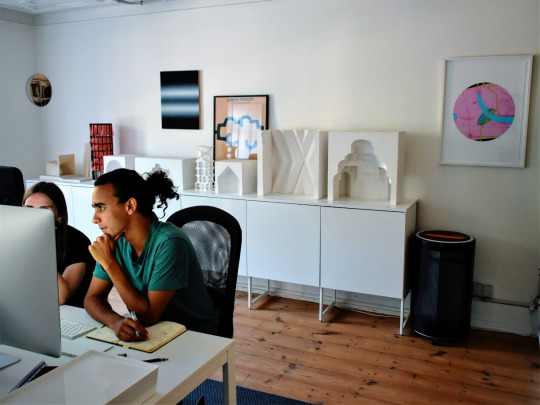
KWY.studio in Alfama, Lisbon. | Photo © Sonja Dragović KWY.studio was founded in 2009 in Berlin by architects Ben Allen and Ricardo Gomes, and curator and editor James Bae from Los Angeles. Named after a magazine published in Paris in the 1950s and 1960s by an international group of artists-collaborators, KWY.studio was focused on creative collaboration from the outset. “The idea for this collaborative practice was to work with someone else on every single project we do”, Ricardo says, joking how the array of things they have done over the last decade might bring about a certain sense of cacophony. The list of collaborators is indeed long and varied; it includes artists, writers, curators, educators, designers, and other architects. Collaborations result in the body of work now scattered all over the world: at any given moment, the practice is involved in about 10 different projects in different places. Rather than trying to break onto the international scene, this studio seems to have always been there. Ricardo explains KWY’s international position as an organic one, tied to the studio’s beginnings in the creative scene of Berlin, and grown from the professional and personal ties and networks of its founders and partners. The current crisis brought about by the coronavirus highlights some of the challenges of such interconnectedness by making international travel more difficult. Still, as Ricardo puts it, “this is the only way to work”.

Desert X Visitor Centre in AlUla, Saudi Arabia was completed in January 2020. | Photo © Colin Robertson
KWY.studio considers collaboration to be the central part of their creative process. Although collaborations differ and change depending on the project, which makes them challenging to typify or map their exact flow, the process always stays the same: the original idea is tested and rigorously debated until it becomes the best possible solution within the given constraints. “It's a good thing, to not have this preconceived idea of the result”, Ricardo says, pointing out that the practice tries to keep the design processes relatively open and non-hierarchical as well: “The collaborative component is important, also within our studio: I try to give the guidance and steer the process a little bit, without necessarily being the one who approves or disapproves of the solution.”
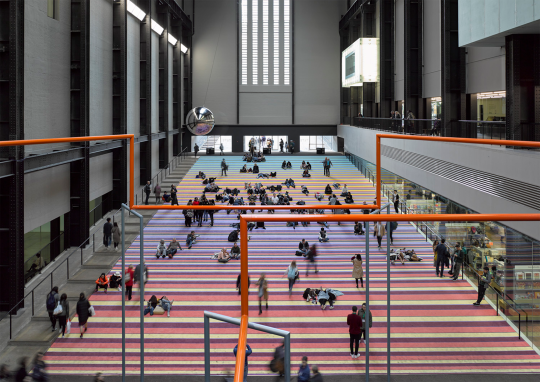
One of the numerous collaborations with SUPERFLEX, produced at Tate Modern in 2017; “One Two Three Swing! challenges society’s apathy towards the political, environmental and economic crises of our age”. The installation has since been presented in Bonn, Copenhagen, Dora, and AlUla. | Photo © James Morris

Walk&Talk: Public Art Circuit curated by KWY.studio in São Miguel, Azores, Portugal, in the summer of 2017. Eleven artists and art collectives were involved, creating “interventions in space which call for a sense of a total work of art”. | Photo © Antonio Araujo
To be good collaborators, young architects need to know that, as architects, they can cover an array of different positions within the process – that they can do many different things, not all of which is architecture. As an educator who used to occupy teaching positions at UDK in Berlin and at DIS Copenhagen, this is what Ricardo sees as important for the new generation, along with the understanding of the necessity to take the time to learn, to adapt, to overcome the problem. In his own words: “Many architecture students, or people just out of university, have very transient work experience; they want to be in one place for six months and then move on. We always tell them that we would rather have a minimum of one year engagement… We get hundreds of applications, and that’s truly a gift. But it seems that many young people today don't see the fact that for you to learn something, you actually need to be in a place for some time, and it takes more than a few months. There is this belief that if you are unhappy, you must move. Well, sometimes it's OK to be unhappy for some time, to use that time to learn, to understand, to resolve a problem instead of just leaving.”

Donald Judd cubes in Marfa, Texas. Thinking about students today and remembering what architectural education and research were like before the Internet became ubiquitous, Ricardo tells a story of how important European exhibitions of Donal Judd were to him personally, and how different the experience of tracking down important works, artists and places was in the not-so-distant world of the year 2001, in the era before Google Maps and smartphones. | Photo via artists-network

Après Vous, Le Déluge, collaboration with SUPERFLEX. The installation shows the projected water level rise by 2050. “By physically showing the likely adverse consequences of our collective conduct, the artwork emphasises that we have no choice but to radically transform the way we live together.” | Photo © Marco Cappelletti
The stance of KWY.studio towards the issues society is facing today is reflected in their work. The practice doesn’t focus on activism but sees political and social considerations as vital to any decision that the architect makes - as inherent to architecture. One of their recent works responding to the issue of climate change is Après Vous, Le Déluge - another collaboration with SUPERFLEX, whose art often deals with this topic. This installation in Galeries Lafayette in Paris shows what the water levels will be in 2050 if nothing is done to stop the climate disaster. According to Ricardo, in addition to collaborating in such conceptual works, KWY.studio is interested in coming up with long-term architectural response to the rising sea levels: “We have been working, also in collaboration with SUPERFLEX, on projects with the idea of potential structures built above ground now, which will eventually be submerged. How do you deal with such a request today? How do you build something today that you know will be submerged, or at least under pressure because of climate change?”

Planning for Protest, September - December 2013, Lisbon Architecture Triennale | Photo via KWY.studio
Today it seems particularly relevant to mention that I first got to know KWY.studio through their work on Planning for Protest, an exhibition and a publication presented at Lisbon Architecture Triennale in 2013. As a project which examined the role of architecture in shaping, defining, or limiting the flow of protest within urban space, it seems to be another work of KWY.studio resonating with the current crisis. Ricardo points out how Planning for Protest was inspired by a wave of unrest at the time of a deep economic crisis, whereas the issues we’re experiencing today are different, more complex, just as their underlying causes. Although the Planning for Protest publication has been in exhibitions over the last couple of years, the popular interest for the project grew noticeably over the last couple of months. As Ricardo explains the sudden surge in popularity of the project’s old Facebook page: “I guess there are more people searching for protest and space and architecture and coming across this, which is quite interesting.”
It’s evident that the repercussions of the multifaceted contemporary crisis affect everything, from how we work and what we read, to how we protest and where we go. As our conversation draws to an end, the unexpected quietness of summertime in Alfama tells plenty about how the city of Lisbon has changed, how tailored to the masses of tourists it became, how empty without them. “There’s a certain uncertainty,” Ricardo concludes, as we leave the terrace in Campo de Santa Clara.
---
KWY.studio Travessa do Conde de Avintes 1, 1100-155 Lisboa Web | Email
by Sonja Dragović
2 notes
·
View notes
Text
Cheap City Breaks Best Affordable European Destinations 2020
Do you want to travel to Europe? Are you under a small budget? The Gods of travel took care of that already. There are plenty of cheap city breaks in Europe in different affordable European destinations you can choose from.
Don’t break the bank but get the very best in spectacular views, nightlife, history, sightseeing, great beaches, people, alternative activities like a yoga retreat in Europe, or some of the best destinations for Christmas.
Read this for the top 10 safest countries in the world today, and this one for cheap travel destinations in Europe.
Are you are a student who wants to travel? Then this post is for you.
Affordable European Destinations 2020
Cheap European Breaks in Prague, Czech Republic
Porto, Affordable City in Portugal
Cheap City Breaks in Athens, Greece
City Trip to Valencia, Spain
Affordable City Break in Budapest, Hungary
Affordable City Break in Lisbon, Portugal
Istanbul, Turkey, Affordable European Destination
Cheap City Escape in Brussels, Belgium
Cheap City Break in Florence, Italy
Best City Break in Madrid, Spain
Best Cheap Trip to St. Petersburg, Russia
Cheap European Vacations in Rome, Italy
Cheap City Break in Corfu, Greece
Berlin, Germany Cheap Holiday Destination
Seville, Spain Cheap European City
Munich, Germany Cheap Holidays in Europe
Summary of Affordable European Destinations
Affordable European Destinations 2020
There is a secret list of affordable European destinations that frequent travelers know.
Countries and cities included in this list are considered a pivot point for your travel experience. Traveling through these cities gets you acquainted with the essence of Old Europe and its history.
We are here to share these secrets for the best cheap city breaks with you.
Cheap European Breaks in Prague, Czech Republic
Right in the heart of Europe, this spectacular city hides lots of secrets, even a medieval astronomical clock that seems to come from a fiction novel. Read a fascinating post for three days in Prague Itinerary.
What are the best things to do in Prague?
Old Town Square (Staromestské námestí)
Charles Bridge (Karluv most)
Prague Castle
St. Vitus Cathedral (Chrám svatého Víta)
Jewish Quarter (Josefov)
Dancing House
Prague Astronomical Clock
National Theatre (Národní Divadlo)
St. Nicholas Church (Chrám svatého Mikuláse)
When to go to Prague?
To avoid large crowds, better go to Prague in spring and early fall (March-May) when the weather is mild. Avoid the holiday seasons (Christmas, Easter).
During May there is a range of important events taking place too: the Prague Marathon, Czech Beer Festival, Prague Food Festival, Prague International Music Festival.
Prague is fantastic among all European Destinations.
Check accommodation and guided tours/tickets/passes options for Prague.
Porto, Affordable City in Portugal
A stunning coastal city with great architecture, history, food, and museums (museums are free to enter on Sundays). The city hosts the UNESCO World Heritage Ribeira District.
What are the best things to do in Porto?
Dom Luís I Bridge
Sé do Porto (Porto Cathedral)
Jardins do Palácio de Cristal (Crystal Palace Gardens)
Avenida dos Aliados (Avenue of the Allies)
Estação de São Bento (São Bento Railway Station)
Mercado do Bolhão (Bolhão Market)
Porto’s fantastic beaches
Livraria Lello & Irmão (Lello Bookstore)
Igreja de São Francisco (Church of Saint Francis)
Port Wine Tastings & Tours
Palácio da Bolsa (Stock Exchange Palace)
Fundação de Serralves (Serralves Foundation Complex)
Museu Nacional de Soares dos Reis (National Museum Soares dos Reis)
Dragão Stadium
When to go to Porto?
From May to September the weather is warm and sunny. Some significant events happening during that time are Optimus Primavera Sound, Serralves em Festa, Festa de São João, Regata dos Rabelos, Festival Mares Vivas.
Porto is one of the best summer European destinations.
Read our post for Porto.
Here are your options for hotels and guided tours/tickets/passes.
Cheap City Breaks in Athens, Greece
There are plenty of things to do in Athens, despite Parthenon and Acropolis. Many prefer this city for two days itinerary but when you read posts like this one, this and this (all Athens section) you will understand that it is for much more.
Due to its geographical location and weather conditions, it is ideal for 10 out of 12 months.
What are the best things to do in Athens?
In short? Read this long post for Athens and things to do if you want more inspiration this post for 40 things to do in Greece and 14-day trips from Athens. You will thank us.
All parks in Athens are free to enter and churches too. Free admission museums are:
The Museum of the History of Greek Costume
The Philatelic and Postal Museum
Railway Museum of Athens
Theatrical Museum of Greece
Natural History Museum of Maroussi
Athens University History Museum
Museum of Greek Folk Instruments
Centre of Folk Art and Tradition
Hellenic Children’s Museum
Free admission holidays
6th of March – Memory of Melina Mercouri
18th of April – International Monument Day
18th of May International Museum Day
5th of June World Environment Day
European Days of Cultural Heritage (The last weekend of September)
27th of September – International Tourism Day
When for Athens?
It’s in Greece! If you avoid December and January, then all other months are fantastic to go to Athens. Even in wintertime, there are ski resorts in less than 2 hours distance from Athens (two in Peloponnese and one in Parnassos mountain). There are options for hiking, all museums are open, and food remains excellent all year long.
Check here for accommodation and available guided tours.
Athens is one of the most fabulous European destinations, as it is a pivot point for the Greek islands.
City Trip to Valencia, Spain
Affordable and easy to reach with a high-speed train from Barcelona or Madrid. A coastal city, vibrant with history and museums. It is famous for its oranges too, so taste some while there.
What are the best things to do in Valencia?
Central Market (Mercado Central)
Plaza Ayuntamiento
Cathedral (Seu)
Fine Art Museum of Valencia (Museo de Bellas Artes de Valencia)
Instituto Valencia d’Arte Modern (IVAM)
Albufera Nature Park (Parque Natural de la Albufera)
La Lonja de la Seda
Valencia Beaches
Bioparc Valencia
City of the Arts and Sciences (Ciudad de las Artes y las Ciencias)
When it is great to go to Valencia?
April to May is best, though there are plenty of visiting in the wintertime. Keep in mind that museums operate under short ours in the winter. Critical events in that period are The Superbike World Championship, Fiesta de San Vicente Ferrer, Holy Week, Festival of Our Lady of the Forsaken.
Check staying prices and guided tours/tickets/passes options for Valencia.
Affordable City Break in Budapest, Hungary
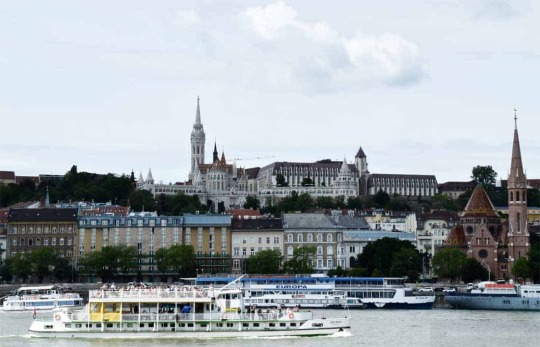
An aspect of the castle from afar
The city is famous for its food and its baroque, neoclassical and art nouveau architecture. Budapest dates back to the Stone Age and comes with great food options!
What are the best things to do in Budapest?
Fisherman’s Bastion (Halászbástya)
Danube River
Castle Hill (Várhegy)
Széchenyi Chain Bridge (Széchenyi Lánchíd)
Heroes’ Square (Hosök Tere)
St. Stephen’s Basilica (Svent István Bazilika)
Buda Castle (Budai vár)
Matthias Church (Mátyás-Templom)
Dohány Street Synagogue (Dohány Utcai Zsinagóga)
Gellért Hill (Gellért-Hegy)
Hungarian State Opera House (Magyar Állami Operaház)
Hungarian Parliament (Országház)
House of Terror Museum (Terror Háza Múzeum)
Hospital in the Rock Nuclear Bunker Museum (Sziklakórház Atombunker Múzeum)
Budapest Zoo & Botanical Garden
Legenda Sightseeing Boats
Thermal Baths
When is it fantastic to be in Budapest?
March to May and September to November is best. That is if you want to avoid huge crowds of tourists (in summertime). The weather is generally mild. Special events happening during these months are:
March to May: Budapest Dance Festival, Macaron Day, Budapest Spring Festival, Budapest100, Rosalia Festival, OTP Bank Gourmet Festival, Budapest Beer Week.
September to November: Jewish Cultural Festival, Budapest Wine Festival, Sweet Days Chocolate, and Candy Festival, Oktoberfest Budapest, Design Week Budapest, Budapest Christmas Markets.
Here is Budapest accommodation options & tours.
Affordable City Break in Lisbon, Portugal
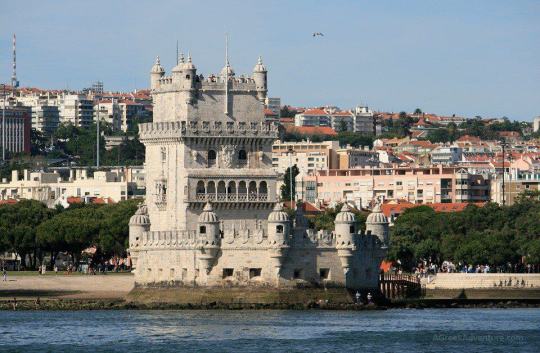
Belem Tower
The city offers at a fraction of the cost whatever you expect to find in a European city. This is another city that emits mystery from Old-World, despite the growth of the modern building. Read this insider’s guide for things to do in Lisbon.
What are the best things to do in Lisbon?
Alfama
Belem
Sintra
Torre de Belem and Monument to the Discoveries
Cascais
Feira da Ladra
Santa Justa Elevator (Elevador de Santa Justa)
St. George’s Castle (Castelo de Sao Jorge)
National Tile Museum (Museu Nacional do Azulejo)
Gulbenkian Museum (Museu Calouste Gulbenkian)
Monastery of St Jerome
Oceanarium (Oceanario de Lisboa)
Taste of Lisboa Food Tours
Lisbon By Boat
Tram 28
When is it best to visit Lisbon?
March to May and September to October is ideal, not excluding other months, too, of course. From March to early June, these events take place: Lisbon Half Marathon, Lisbon Fish & Flavours, Music Days in Belem, IndieLisboa, Festival de Sintra, Out Jazz Festival. On the other hand, the MOTEL X – Lisbon International Film Festival happens in September, while the Out Jazz Festival continues too (May to September).
Read our posts for Lisbon and Lisbon food, Cascais, Sintra, Fatima. There are plenty of day trips from Lisbon to consider.
Book your accommodation early and allow time for guided tours.
Lisbon and the nearby cities make it another great spot among all European destinations.
Istanbul, Turkey, Affordable European Destination
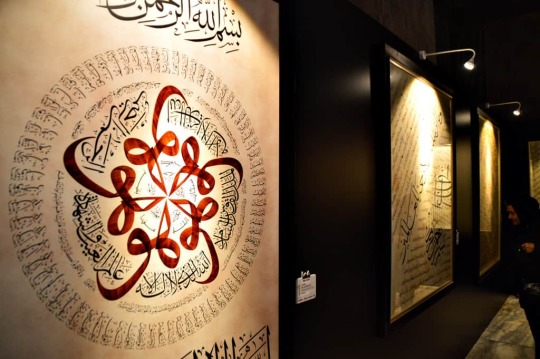
A jewel of the Orient. A city of thousands of secrets and legends, with different locations that drive your mind to thousands of mystical stories.
Herbs & spices, Bosporus, belly dancing, fantastic architecture, and all kinds of landmarks. Istanbul will fill your days with many things while acting as a pivot point for many nearby cities.
It is famous for Agia Sophia and the Blue Mosque, but that is just a fraction of the things to see and do. Read the post from our trip there. For what to eat in Istanbul, read this.
What are the best things to do in Istanbul?
Blue Mosque (Sultanahmet Camii)
Grand Bazaar (Kapaliçarsi)
Süleymaniye Mosque (Süleymaniye Camii)
Taksim Square
Ortaköy
Hagia Sophia Museum (Ayasofya Müzesi)
Istanbul Archaeological Museums (Istanbul Arkeoloji Müzeleri)
Topkapi Palace Museum (Topkapi Sarayi Müzesi)
Istanbul Modern Art Museum
Chora Museum (Kariye Müzesi)
Basilica Cistern (Yerebatan Sarnici)
Dolmanbahçe Palace
Galata Tower (Galata Kulesi)
When it is amazing to visit Istanbul?
Best go there from September to November and from March to May. In the first period, you will have the opportunity to attend these too: Contemporary Istanbul, Istanbul International Puppet Festival, Akbank Jazz Festival, Istanbul Theatre Festival.
In the March to May period, these things happen at the Istanbul Film Festival, Istanbul Music Festival.
For hotels in Istanbul, check these options as well as for guided tours.
Cheap City Escape in Brussels, Belgium
If you crave for some delicious chocolate, then you can visit Brussels even for one day. Take the train from Paris or Amsterdam and savor all these from kiosks you will find in all streets.
Restaurants will be pricey, so no need to pay more for chocolate than needed. There are lots of museums and don’t forget that this is a multicultural & multilingual country.
People here speak Dutch, French & English, of course.
What are the best things to do in Brussels?
Manneken Pis
Grand-Place
St. Michael and St. Gudula Cathedral
Royal Museum of the Army and Military History
Palais de Justice
Mini-Europe
Royal Museums of Fine Arts of Belgium
Musical Instruments Museum
Atomium
Horta Museum
Belgian Comic Strip Center
Cantillon Brewery
When is it nice to be in Brussels?
March to May and September to October is best. In the first case, because it is Springtime while in the second case, prices drop significantly, while the weather stays mild enough.
Check Brussels accommodation prices. Here are the tour options.
Cheap City Break in Florence, Italy
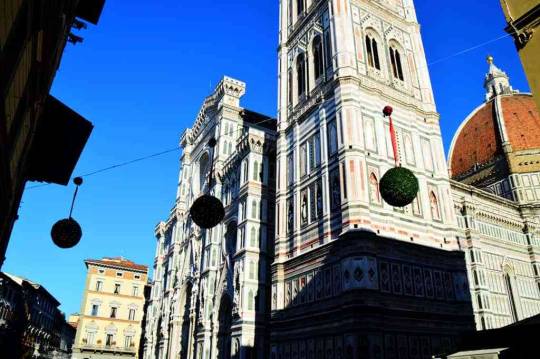
Have we been to Florence, Italy? Yes, twice. The first one was as part of a road trip that involved crossing Europe to the UK driving at the North.
The second one was as part of another road trip getting from the UK to Greece from the South part fo Europe!!! Read this excellent post for Florence (Firenze).
We have traveled to many cities in Italy (including Sicily island). Read the post for things to do in Sicily.
What are the best things to do in Florence?
Piazzale Michelangelo
Ponte Vecchio
Piazza della Signoria
Duomo (Cathedral of Santa Maria del Fiore)
Uffizi Gallery (Galleria degli Uffizi)
Baptistry (Battistero)
Galleria dell’Accademia
Palazzo Pitti
Basilica di Santa Croce
Giotto’s Bell Tower (Campanile di Giotto)
Boboli Gardens (Giardino di Boboli)
When it is most nice to visit Florence?
Preferably from May to September. Lots of sunshine, but you need to search thoroughly for accommodation as in touristy places prices get high.
There is no need to stay in, such though as the city is easy to walk. You can quickly get into the historical center with public transportation.
Either way, you will walk all the historical center to see the things mentioned above.
Check this for staying in Florence and all the tickets & passes options.
Florence is one of the best cultural European destinations, that is seen in video games.
Best City Break in Madrid, Spain
There are so many plaza’s (Madrid is Spain’s largest city) that are free to the public. You can spend days just visiting each other.
However, Madrid is far more than that. Read our post for things to do in Madrid and check the list below too.
What are the best things to do in Madrid?
Plaza Mayor
Gateway of the Sun (Puerta del Sol)
Plaza de Cibeles
El Rastro Market
Temple of Debod
Retiro Park (Parque del Retiro)
Royal Palace of Madrid (Palacio Real)
Prado Museum (Museo Nacional del Prado)
Thyssen-Bornemisza Museum
Mercado San Miguel
Sorolla Museum
Bernabéu Stadium
Queen Sofia Arts Center
When is it excellent to visit Madrid?
The March to May and September to November rule holds for Madrid too. The weather temperature is the main reason for this. Summer in Madrid is scorching due to the city’s geographical location. In Autumn, you can attend the Autumn Festival.
Here are the Madrid lodging prices & tours.
Best Cheap Trip to St. Petersburg, Russia
Russia is a destination where you will get reasonable prices if you book early. Most people will visit Moscow, St. Petersburg, or both on a trip.
Moscow is great for New Year’s Eve, too, while St. Petersburg offers an entirely different experience.
What are the best things to do in St. Petersburg?
Hermitage Museum and the Winter Palace
Church of the Savior on Spilled Blood
Grand Market Russia Interactive Museum
St. Isaac’s Cathedral
Summer Garden
Peterhof Palace & Garden
Russian Museum
Yusupov Palace
The Naval Cathedral of Saint Nicholas in Kronstadt
Chapel of St. Xenia of St. Petersburg
Yelagin Island
When is it great to visit St. Petersburg?
Avoid winter. Better to visit from June to September. Hot events taking place are White Nights, International Festival of Choral Art, International Early Music Festival.
Winter is cheaper, but lots of activities are not happening, and cold in Russia is rather extreme.
Check the best accommodation options and guided tours/ticket/passes options for St. Petersburg.
Cheap European Vacations in Rome, Italy
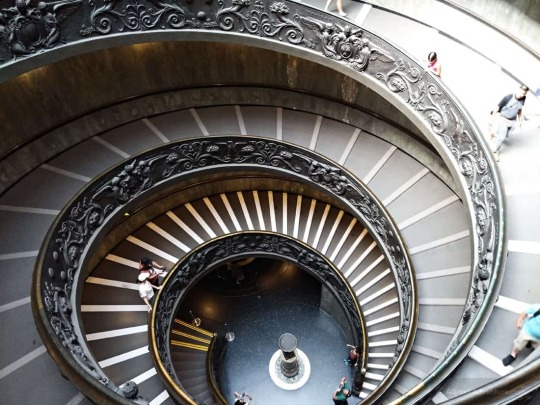
The famous Vatican stairs: Bramante Staircase
The city of Rome is a living, walk-through museum. It is an unbelievable destination suitable for all seasons (not so good when rains fall but still beautiful).
We have been multiple times in Rome with kids or not. It is suitable for going without kids too. Prepare for lots of walking as a car is useless in the vast historical center which covers most of the city of Rome.
What are the best things to do in Rome?
Trevi Fountain (Fontana di Trevi)
Church of San Luigi Dei Francesi
Santa Maria Della Vittoria
Ancient Appian Way
Trastevere
Basilica di San Clemente
Piazza Navona
Gianicolo Hill
Campo de’ Fiori
Porta Portese
Spanish Steps
Musei Capitolini
St. Peter’s Basilica (Basilica di San Pietro)
Pantheon
Colosseum (Colosseo)
Vatican Museums and Sistine Chapel
Roman Forum (Foro Romano)
Palatine Hill
Galleria Borghese
Gruppo Storico Romano Gladiator School
When is it wonderful to visit Rome?
Prices are lower from October to April. The weather is hot in summer, but Rome has free water fountains all over the city, and you will be amazed by the colors of the city with summer light.
You can find lots of affordable accommodations outside of the historical center, but it will still be close to it, so no worries. Better to go there with the sun than rain.
The cold will not be an issue with all the walking (if you plan for winter). Food is affordable if you avoid tourist restaurants.
Check here for where to stay in Rome and all tours with a guide and skip the line tickets.
Cheap City Break in Corfu, Greece
Corfu is a contradictory island, suitable for many different tastes. One of its sides/coasts has lots of beaches while the other one is rocky.
The best beaches will be revealed by the locals when they like you, so make sure they do. This post will be somewhat informative for you.
The islands hold the essence from the Venetian history, and you will notice that in the architecture of its capital.
What are the best things to do in Corfu?
All the beaches
Paleokastritsa Monastery (and beach)
Corfu Donkey Rescue
Church of Saint Spyridon
Corfu Museum of Asian Art
Achillion Palace & Museum
Palaio Frourio (Old Fortress)
Aqualand (lots of fun)
When is it superb to visit Corfu?
Summertime is the best season. In case you want to hit the lowest prices ever then visit Corfu from April to May and September to November.
Corfu is in the West part of Greece, and you can encounter lots of rain during those times. In case you can be there in Orthodox Easter time, you will see lots of local customs happening.
Here is where to stay in Corfu and guided tours.
Berlin, Germany Cheap Holiday Destination
Berlin is a somewhat controversial city with extreme nightlife. If you are after nightlife, then it won’t be very cheap. Many other things come at really affordable prices.
Here is a post with ideas for three days in Berlin and another one for five days in Germany.
What are the best things to do in Berlin?
Brandenburg Gate
Memorial to the Murdered Jews of Europe
Potsdamer Platz
Tiergarten
The topography of Terror
East Side (Wall) Gallery
Reichstag
Museum Island
Pergamonmuseum
Zoologischer Garten Berlin
Checkpoint Charlie
TV Tower
Charlottenburg Palace
When is it thrilling to visit Berlin?
From May to September, you can additionally attend these events: Formula E ePrix Championship, Carnival of Cultures, Fete de la Musique, Berlin Fashion Week, Lesbian and Gay City Festival, International Berlin Beer Festival, Berlin Marathon.
Berlin is at the center of Germany but also in the North of Europe so that any other months will be rather cold.
Find here the Berlin lodging options & tickets for excellent tours and landmarks.
Seville, Spain Cheap European City
With hotels moving around the USD100 per night, this city is affordable too. There are hostels and such if you want to lower the accommodation fees.
There are lots of parks, promenade locations, museums, bull-fights, and tasty food. See more great places to visit in Spain.
What are the best things to do in Seville?
La Carbonerí
Guadalquivir River Cruise
Metropol Parasol
Museum of Fine Arts
Plaza de Toros de la Real Maestranza
Ramón Sánchez-Pizjuán Stadium
Torre del Oro
Isla Mágica
When it is great to visit Seville?
Better to visit from March to May due to mild temperatures. The famous events of Semana Santa and Feria de Abril, happen in these months.
Where to stay in Seville? Check here. What do in Seville? Click here.
Munich, Germany Cheap Holidays in Europe
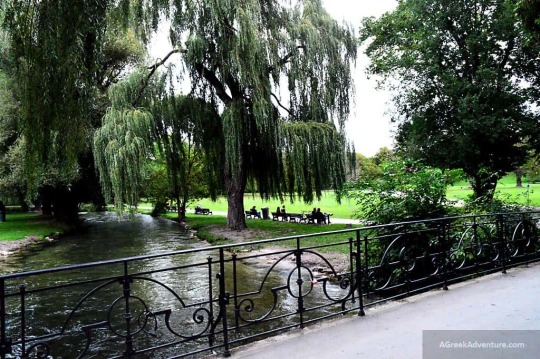
Munich maybe not the first destination that comes in your mind when you plan to visit Europe, but it is a great one.
You can read our experiences in Munich from here, here and here. By the way, beers and food are fantastic.
What are the best things to do in Munich?
English Garden
Church of Our Lady
Viktualienmarkt
Nymphenburg Palace Gardens
Biergarten am Chinesischen Turm
St. Michael’s Church
Marienplatz
St. Peter’s Church
Deutsches Museum
Residenz Royal Palace
Old Picture Gallery
Augustiner-Keller
Bayerische Staatsoper Opera House
Nymphenburg Palace Museum
Modern Picture Gallery
When is it amazing to visit Munich?
March to May is best, though the weather may get a bit chilly. Things are happening in the summertime, but there are lots of crowds too.
Check for accommodation in Munich and all the tours & passes
Summary of Affordable European Destinations
As you see, there are lots and lots of places to visit. This list will expand more in the following days, so make sure you subscribe to it!
Traveling is fun, and budget or/and affordable traveling is preferred by many.
Have fun!
from Cheapr Travels https://ift.tt/3evzYQA via IFTTT
3 notes
·
View notes
Text
Cosa fare a Lisbona quando piove?
Cosa fare a Lisbona quando piove?
Chi prepara un viaggio a Lisbona e cerca informazioni su internet, o sulle guide cartacee, trova fotografie con cieli azzurri e soli ridenti. È vero che qui è raro avere diversi giorni di pioggia di seguito, ma cosa fare se capita proprio quando decidiamo di visitarla? ENGLISH – PORTUGUÊS – FRANÇAIS – ESPAÑOL – DEUTSCH Se vi dicessi che si può anche venire a Lisbona senza visitare le sue…
View On WordPress
#a lisbona con lilly#alisbonaconlilly#cosa fare a lisbona con la pioggia#cosa fare con i bambini a lisbona#cosa vedere lisbona#eventi lisbona#fine settimana lisbona#Fundação das Casas de Fronteira e Alorna#insolita lisbona#inverno a lisbona#italiani a lisbona#italiani in portogallo#liliana navarra#lillyslifestyle#lisboa story centre#lisbona con la pioggia#lisbona e dintrni#lisbona insolita#lisbona non turistica#lisbona portogallo#marzo lisbona#metropolitana lisbona#musei a lisbona#museo storia lisbona#Ocenario di Lisbona#palazzi curiosi lisbona#prova vini lisbona#vacanza lisbona#vini lisbona#vini portogallo
0 notes
Note
Hey there! Maybe you didn't get my ask or maybe you didn't want to answer it (which would be totally okay btw), but nevertheless here it is again! I'm doing Interrail in Portugal in August: Lisboa-Porto-Coimbra-Evora. Do you have any tips for me? Do's, don'ts? Thanks so much! Love from Vienna🤗 PS: if you don't want to answer it's totally fine, I just thought I would give it another try:)
Hi! I definitely didn’t get your ask the first time, I’m glad you gave it another try. So first of all: YES an Interrail in Portugal 🎉 and you’re coming to Porto ❤️
First Do is meeting me in Porto haha (only if you would feel comfortable ofc).
More seriously though, a big Do is trying ALL the pastries: Pastel de Nata (I actually like them better than the more popular Pastel de Belém), Bola de Berlim, Jesuítas, Cavacas, Croissants (the Porto ones, which there are two varieties of and you gotta try both), Limonetes, Pão de Deus, Castanhas de Ovo, Cristas de Galo, Broa de Mel, etc etc etc. The best place for pastries is the Confeitaria Porto Rico in Porto - try some almendrados. They’re to die for. And the BREAD. I’ve been to Central Europe several times and I’m sorry to say this, but y’all can’t make proper bread. So that’s another thing on the list.
Two big DON’T’s: high heels and crossing the street outside of crosswalks or with red lights. We Portuguese have developed a special talent for crossing the street when and where we shouldn’t. Don’t try to do the same, it’ll go wrong.
The high heels thing is because a LOT of our sidewalks are very irregular. Also, don’t expect us to speak Spanish (really, some people get really annoyed).
As for DO’s: always say “bom dia” if it’s morning, “boa tarde” if it’s afternoon, or “boa noite” if it’s night when you approach someone. Or, you know, “hello”. Say please and thank you - and excuse me. We value that. Always check if there are services tickets like at the supermarket, the bakery, the pharmacy, and such. Oh and do pay attention to graffitis (there’s BEAUTIFUL art) and expect to EAT - and have dinner late, because no Portuguese person has dinner before 7 pm.
Our summer has been quite shy so I wouldn’t expect high temperatures, but in Portugal you never know. It’s usually definitely warmer in the south though.
Anyway, city by city:
Lisboa
DO’s
Visit the central places, like Praça do Rossio, Praça do Comércio, Avenida da Liberdade, Palácio de Belém. Lisbon is like half pretty and half ugly af, and the (very, very) pretty part is basically only the famous part. Fonte Luminosa, which is a bit off the centre, is definitely worth seeing, too. That area is pretty as well, I guess. Avoid the 28 streetcar during rush hour - there’s a lot of pickpockets there. Actually, stay alert: there are a lot of pickpockets in Lisbon, in general. If you’re not claustrophobic or something of the sort, then try the underground caves, like Galeria Subterrânea do Loreto and Reservatório da Patriarcal. Go to the Park of Necessidades. Also, Villa Bertha is considered the pretties street in Lisbon. The Oceanário is pretty cool too, though I prefer the Vasco da Gama Aquarium, which is beautiful both inside and out and has a GIANT SQUID.
DON’T’s
Again, avoid the 28 streetcar (and streetcars in general) during rush hour. Avoid the more touristy Fado houses - go for the small, inconspicuous ones instead. The music show is free and the food is cheaper and better. Avoid this shit like the plague - it can give you cooties. Look at this if you want to either laugh or feel second-hand embarrassment - it’s basically a giant toilet 😂
Porto
DO’s
Everything? The historical part (Baixa), the seaside (Foz, where you might even stumble into Iker Casillas), the riverside (Ribeira), the Boavista Avenue, the City Park, Serralves, Palácio de Cristal, this beauty, the museum attached to that beauty, the Port wine caves. You can also literally just cross the bridge to Gaia and get up to Jardim do Morro, which has beautiful sights (striking view to Porto). Visit the churches in Baixa, they’re all beautiful inside. Try a francesinha (it’s mandatory! “O Afonso” might be a good restaurant, Anthony Bourdain himself visited it and it’s not too packed and touristy). You can find the best pastries in Porto, too. Do you know what this is? McDonald’s. Yep. Visit the Café Imperial. Obviously, you HAVE to eat fish - I recommend this restaurant in Matosinhos, which is also glued to Porto (imagine a sandwich: Gaia and Matosinhos are the bread and Porto is the ham). Go to Cervejaria Gazela, it has great beer and great cachorrinhos da Batalha. In Avenida da Boavista, go to A Casa da Boavista - it’s gorgeous and the food is good too. Take the many staircases that connect Ribeira to Baixa and take the chance to visit the Sé. Cool fact: the Harry Potter setting/universe was inspired by Porto. JK Rowling lived here for some years and you can really see the similarities. Oh and the urban art is Porto is something else.
DON’T’s
Nightlife in Porto is in Baixa, don’t go anywhere else, it’s not worth it. Don’t eat in Foz - every place there is overpriced because it’s basically where the rich people live (still a GREAT place to visit though). Don’t go to the City Park at night. Don’t expect the metro to work past 1 am (the yellow/D line works 24h on Fridays, Saturdays, and Sundays though). Again, no high heels. Bring comfortable shoes. Don’t try to speak Spanish - go for English. Do NOT compliment Lisbon. Lisbon sucks. Lisbon stinks. Lisbon is evil. Lisbon is the embodiment of The System™ and our corrupt politicians. Porto represents the fight against The System™ and against a central power that stays afloat on the shoulders of those who actually work. Complimenting Lisbon to a Portuense is like saying that blarke is the best and only real ship to a Clexa fan. Got it?
Coimbra
In Coimbra, I’d say visit the academic area (the University of Coimbra was the first in the country), the botanical gardens, and Portugal dos Pequenitos. And of course, Quinta das Lágrimas, home to the most epically romantic (and quite violent) story in the history of Portugal, dating back to the 14th century.
(basically, Prince Pedro, heir to the throne, loved Inês, who was a handmaiden to the princess he was about to marry; they “dated” at the Fonte dos Amores; but the romance triggered a huge political drama, so the King ordered Inês’s death; she was killed while Pedro was away on a hunting trip - they killed her next to the Fonte das Lágrimas, where legend says her bloody tears as she died stained the water (fun fact: the red stains remain and are unique to that fountain); shortly thereafter, the King died and Pedro was crowned King of Portugal; still enraged over his lover’s death and now able to exact revenge, Pedro killed his Inês’s murderers - TW actually ripped their hearts out; not quite satisfied, he ordered Inês unearthed and dressed like royalty, and crowned her his queen - and then forced everyone in the court, who had once belittled Inês, to kiss her hand; then he “built” the (beautiful) Alcobaça Monastery, where their mortal remnants still lie today - their tombs face each other so that, according to the legend, they can wake up in the afterlife looking into each other’s eyes).
Évora
Visit the Megalíticos and the Roman ruins. Go to Diana’s Garden and the Loios Church. Visit the Art Café and, if you’re feeling like having some regional cuisine, try the 5 Amêndoas restaurant, it’s a nice mix of traditional and modern. Also, remember: Évora is in Alentejo, which means it’s REALLY hot during the day (upwards of 30º C) and pretty cold at night (below 15º C).
6 notes
·
View notes
Text
Emerging Infectious Diseases Speaking of Science through Art and Storytelling, MoMA The Museum of Modern Art ‘How Cézanne’s Apples Turned Me into a Food Writer Ruth Reichl’, Oriental Institute - University of Chicago Documenting "Yellow" Coffins from Bab el-Gasus University of Lisbon, Niccolò Pomarancio (Roncalli Cristoforo, 1517 ou 1519-après 1591), Annonciation, Palais Fesch, musée des Beaux-Arts.
Emerging Infectious Diseases Speaking of Science through Art and Storytelling, MoMA The Museum of Modern Art ‘How Cézanne’s Apples Turned Me into a Food Writer Ruth Reichl’, Oriental Institute - University of Chicago Documenting "Yellow" Coffins from Bab el-Gasus University of Lisbon, Niccolò Pomarancio (Roncalli Cristoforo, 1517 ou 1519-après 1591), Annonciation, Palais Fesch, musée des Beaux-Arts. https://blog.naver.com/artnouveau19/222492980885 https://podcasts.apple.com/kr/podcast/emerging-infectious-diseases/id212828612?i=1000533986921 https://www.moma.org/magazine/articles/617 https://www.digital-epigraphy.com/projects/documenting-yellow-coffins-of-the-so-called-eighth-lot-of-antiquities-from-bab-el-gasus?fbclid=IwAR1bu3tVT_jtxTQffJf3CQt56PwiflthnwhW0ljyOsGTTn_afHDeSY1OsGI
https://www.facebook.com/photo?fbid=412841182108395&set=a.131132153612634
Speaking of Science through Art and Storytelling
Emerging Infectious Diseases https://podcasts.apple.com/kr/podcast/emerging-infectious-diseases/id212828612?i=1000533986921
Byron Breedlove, the managing editor of the CDC's Emerging Infectious Diseases journal, and Sarah Gregory discuss the development and evolution of EID journal cover essays.
How Cézanne’s Apples
Turned Me into a Food Writer
An author, former editor, and storied restaurant
critic recalls a turning point in her life.
Ruth Reichl
Aug 31, 2021
Paul Cézanne turned me into a food writer.
But it was not for any of the reasons you might imagine.
In the late sixties, when I was a graduate student in art history, my professors were constantly dropping the names of restaurants near great monuments of art. I wrote them all down: the trattoria five minutes from Giotto’s murals in Assisi (“get the ribollita”), the bistro around the corner from Notre Dame that served fantastic choucroute, and the 500-year-old tofu specialist near Kyoto’s Kinkaku-ji. And it was while studying Gustav Klimt that I first heard of Demel, Vienna’s venerable emporium of pastry.
The art historians I studied with also enjoyed deconstructing the many meals depicted in art. Together we devoured endless last suppers, along with the painted feasts of Bruegel, Vermeer, and Veronese. They discussed artists like Orozco and de Heem, who used food as both allegory and a means of illuminating ordinary life. And when one professor announced that his next lecture would be devoted to the food of Cézanne, I could hardly wait.
We walked into the room to find a slide of Cézanne’s Apples on the giant screen above our heads. “Cézanne,” the professor began, “once told a friend that fruits ‘love having their portraits done’.” We all stared up at the painting as he continued. “Cézanne also said that he wanted to ‘astonish Paris with an apple’.”
I concentrated on that image, waiting to be astonished. But hard as I tried, those apples left me cold. Cézanne’s apples, I soon discovered, were not apples; they were painted strokes on a canvas, and he did not want you to forget it. That was the point.
I understood what the artist was up to. That painting was about art, not apples. It was about the impossibility of ever making two dimensions truly resemble three. It is an interesting intellectual idea, and in the context of art history, an important one. But the more I stared at that painting, the more I began to wonder if I wanted to spend the rest of my life thinking about such things.
I left that class in a state of confusion. It was a beautiful fall afternoon, and as I walked back to my apartment, I couldn’t shake the feeling that there was something wrong with me. Shouldn’t a person who planned to be an art historian appreciate Cézanne’s apples? Passing a local grocery store I noticed a fine display of Ida Reds, Arkansas Blacks, and Esopus Spitzenburgs. They were beautiful; astonishing, in fact. But I had no desire to contemplate those apples; all I wanted to do was eat them. I bought as many as I could carry, determined to transform them into something delicious.
At home I peeled the apples, listening to the seductive way they came whispering out of their skins. I sliced them and showered them with lemon juice, leaning into the citric scent. Constructing a crumble, I concentrated on the way the butter became one with the flour. And then, surrounded by the heady aroma of sugar, butter, and fruit swirling through my kitchen, I opened my notebooks and began to read.
The evidence was all there: I was looking at art but focusing on food. I was clearly not meant to be an art historian. Much as I enjoyed studying art, my true passions lay elsewhere. By the time the apples emerged from the oven, my life had chang https://www.moma.org/magazine/articles/617
MoMA The Museum of Modern Art
@MuseumModernArt
·
“Cézanne turned me into a food writer.”
After an art history lecture on #Cézanne food,
@ruthreichl
went home to make an Apple Crumble—a dessert that would alter the course of her life.
Read Reichl's story and get the recipe: https://www.moma.org/magazine/articles/617 https://twitter.com/MuseumModernArt/status/1433245560509710336
MoMA The Museum of Modern Art
“Cézanne turned me into a food writer.”
As a graduate student in art history, #RuthReichl deconstructed the many meals depicted in art and took notes on great restaurants near art monuments.
After a lecture on #Cézanne’s apples, Reichl went home to make an apple crumble—a dessert that would alter the course of her life.
After receiving her Masters in the History of Art in 1970, she became the restaurant critic and food editor of the Los Angeles Times, the restaurant critic of the New York Times, and the Editor in Chief of Gourmet Magazine.
With fall just around the corner and “Cézanne Drawing” closing on September 25, @ruth.reichl shares her apple crumble recipe with us. Read Reichl’s story for #MoMAMagazine: mo.ma/2YjJBhR
—
[1] Paul Cézanne. Still Life with Apples on a Sideboard (Pommes avec bouteille, pichet et pot bleu).” 1900-1906. Pencil and watercolor on paper. Dallas Museum of Art. The Wendy and Emery Reves Collection [2] Ruth Reichl as a graduate student [3] Photo by Mikkel Vang
https://www.facebook.com/MuseumofModernArt/photos/pcb.10160471355597281/10160471347567281/
Documenting "Yellow" Coffins from Bab el-Gasus
June 24. 2021
Written by Rogério Sousa, Professor of Egyptology and Ancient History at the Centre for History of the Faculty of Humanities, University of Lisbon. Gate of the Priests Project.
When in 2009 I was entrusted with the mission of producing a catalogue of the coffin sets of the so-called "Eighth Lot of Antiquities" from Bab el-Gasus (Sousa 2017), I could hardly imagine that this would be a turning moment of my life as a researcher (Fig. 1). This collection had been given in 1893 by the Egyptian authorities, just two years after its discovery. Bab el-Gasus was discovered by Eugène Grébaut and Georges Daressy, containing the undisturbed burial sets of 153 priests and priestesses of Amun who lived during the 21st Dynasty. Due to the sheer size of the find, a decision was made to offer some of these antiquities to Egypt's countries with diplomatic relations. In 1893, when the young khedive Habas II Hilmi was crowned, 17 lots of antiquities were prepared and shipped to the respective countries. The Portuguese Lot was entrusted to the Sociedade de Geografia de Lisboa (Fig. 2). It included five anthropoid coffins (four inner coffins and one outer coffin), three mummy covers, and a sample of shabtis. Like most other lots from Bab el-Gasus, this collection remained in the Museum's storerooms and unpublished. https://www.digital-epigraphy.com/projects/documenting-yellow-coffins-of-the-so-called-eighth-lot-of-antiquities-from-bab-el-gasus?fbclid=IwAR1bu3tVT_jtxTQffJf3CQt56PwiflthnwhW0ljyOsGTTn_afHDeSY1OsGI
Oriental Institute - University of Chicago
August 30 at 2:00 AM
This week digitalEPIGRAPHY is looking at “Documenting ‘Yellow’ Coffins from Bab el-Gasus” by Rogério Sousa, Professor of Egyptology and Ancient History at the University of Lisbon.
Prof. Sousa briefly reviews the history of these remarkable anthropoid coffins (from a large cache of undisturbed burials of priests and priestesses of Amun from Dynasty 21, discovered near the mortuary temple of Hatshepsut and given to Portugal in the late 1800s). He then highlights the imperative need for drawings, as so much of the decorative detail was not visible in photographs (image 2), and discusses the importance of the drawings for his further work on understanding these incredibly elaborate coffins (images 3 and 4)!
https://www.facebook.com/OrientalInstitute/photos/pcb.10159489136319486/10159489118499486/
Niccolò Pomarancio (Roncalli Cristoforo, 1517 ou 1519-après 1591), Annonciation, 56x39 cm, Palais Fesch, musée des Beaux-Arts. https://www.facebook.com/photo?fbid=412841182108395&set=a.131132153612634
0 notes
Text
São Bernardo Elementary School, Aveiro
São Bernardo Elementary School, Aveiro Building Project, New Portuguese Architecture, Portugal, Images
São Bernardo Elementary School in Aveiro
14 Jul 2021
Architects: ARTE TECTóNiCA
Location: Aveiro, Portugal
São Bernardo Elementary School
The aim was to create a new project to replace 8 basic educational classrooms at São Bernardo School, in Aveiro, Portugal.
For about a decade, the school was housed in a prefabricated pavilion, now reused as a covered playground.
Located between the cafeteria and the gym, the available terrain was a longitudinally East/West rectangular shape.
The concept was a two volume/two floors building, with an independent entrance and roof covering, as Aveiro is one of the highest rainfall districts in Portugal. In addition to the 8 classrooms, the program also included a teachers’ lounge and a gym.
Juxtaposing “serviced spaces” with “servant spaces” (Op. Cit. Louis Kahn), the proposed concept was to consecrate the North exposure to the classrooms, and to distribute the “servant” spaces along the central corridor, big enough to have individualized student lockers.
This horizontal circulation longitudinal space is reproduced both in ground and first floor, with connection through a wide staircase, beginning in the two-story high, entrance hall.
The plan is approximately rectangular, “centre parting”, with classroom façade cutouts strictly exposed to geographic North, to receive the “perfect light”, without direct solar incidence. Exceptionally the covered entrance evades the East / West orthogonality, and aligns the walkway trough an 45º axis.
The four slopes articulated roof allows a two volumes silhouette, that conceals in the middle “valley” the HVAC equipment and the solar panels.
The white tile and walls option unifies by color the two volumes, the outer walkways in Thermoclear blue frames the white, adding to the opacity of the built mass the lightness of the translucent porches in sky blue.
São Bernardo Elementary School in Aveiro, Portugal – Building Information
Design: ARTE TECTóNiCA
Main Architect: Arquitecto João Cassiano Santos Website: E-mail: [email protected] Facebook: https://ift.tt/3wKOcoU Instagram: https://ift.tt/2ULR1Ze Location: Aveiro, Portugal Year of conclusion: 2020 Total area: 4375 sqm
Architectural photographer: Ivo Tavares Studio Facebook: https://ift.tt/3icjIGK Instagram: https://ift.tt/2TdTnjo
São Bernardo Elementary School, Aveiro images / information received 140721
Location: Aveiro, Portugal
New Portuguese Architecture
Contemporary Portuguese Architecture
Portuguese Architectural Designs – chronological list
Lisbon Architecture Tours by e-architect
Portuguese Houses
Portuguese Houses
Selection of interesting Residential Projects in Portugal:
Casa Salicos, Carvoeiro, Algarve Architects: STUDIOARTE photo : Da Cruz Photo – Luís da Cruz New House in Algarve
Houses in Calçada dos Mestres neighborhood, Campolide hill, Lisboa Design: Orgânica architecture office photograph : Do Mal o Menos Houses in Calçada dos Mestres
Portuguese Architecture
Casa Moreira Architects: César Machado Moreira architect photograph : José Campos New Home in Porto
Ring House Design: Vasco Cabral + Sofia Saraiva photograph : José Campos New House in Santarém
Contemporary Houses
Lisbon Buildings
Porto Buildings
Portuguese Architect Studios
Comments / photos for São Bernardo Elementary School, Aveiro page welcome
The post São Bernardo Elementary School, Aveiro appeared first on e-architect.
0 notes
Text
Tipps für eine Lissabon-Reise mit Kindern
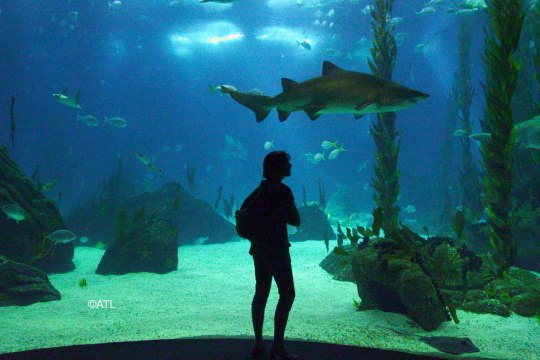
Als familienfreundliches Ziel für eine Städtereise mit Kindern präsentiert sich Lissabon. Die Flugzeiten halten sich in Grenzen, gut ausgebaute öffentliche Verkehrsmittel, schöne Strände, viel Grün, kindgerechte Führungen in Museen oder Mitmach-Ausstellungen sowie zahlreiche Attraktionen für Groß und Klein gleichermaßen, sprechen für einen Trip in die Tejo-Metropole. Ozeanarium, Zoo oder das Lisboa Story Centre sprechen die gesamte Familie an.
Haie aus nächster Nähe: Oceanário im Parque nas Nações
Die Unterwasserwelt im Oceanário im Parque nas Nações, einem der größten Meeresaquarien der Welt, beherbergt rund 16.000 Meeresbewohner. Durch eine Glasscheibe, die sich über zwei Stockwerke, eröffnet sich den Besuchern im großen Hauptaquarium, gefüllt mit fünf Millionen Litern Salzwasser, eine wunderbare Welt. Zum Greifen nahe ziehen hier unter anderem Haie, Rochen, ganze Makrelenschwärme und ein Mondfisch vorbei. Der Eintritt kostet 19 Euro pro Person, für Kinder von drei bis zwölf Jahren 13 Euro. https://www.oceanario.pt/en
2.200 Tiere im Lissaboner Zoo
Wer noch mehr Tiere sehen will, der sollte den Lissabonner Zoo besuchen – vor allem mit Kindern ist dies eine schöne Sehenswürdigkeit, um einen Tag abseits des Trubels Stadt zu verbringen. Geparden, Tiger, Seelöwen, Affen und Koalas: Im mehr als 100 Jahre alten Zoo leben rund 2.200 Tiere und weit über 330 verschiedene Tierarten. Eine Seilbahn mit offenen Kabinen verläuft über das Areal und bietet interessante Perspektiven und Blicke auf die tierischen Bewohner. Der Eintritt kostet 25,18 Euro pro Person, Kinder von drei bis zwölf Jahre zahlen 15,68 Euro. https://www.zoo.pt/en/.
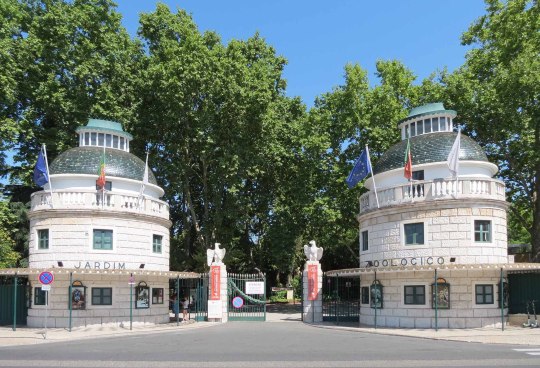
Zoologischer Park in Lissabon / ©ATL
Quer durch Lissabons Geschichte im Lisboa Story Centre
In der interaktiven Ausstellung begeben sich Besucher auf eine virtuelle Reise in die Vergangenheit Lissabons – von der Entstehung bis zur Gegenwart. Auf 2.200 Quadratmetern erfahren Besucher mittels einer multimedialen Ausstellung in rund einer Stunde alles Wissenswerte über die Stadt von ihrer Entstehung bis zur Gegenwart. Die Ausstellung ist in sechs Bereiche unterteilt. Kernstück des Lisboa Story Centre: Groß und Klein können das Erdbeben von 1755 „erleben“. Außerdem erfahren sie anhand eines Modells, wie die Stadt vor dem großen Erdstoß ausgehen hat. In einem eigenen Bereich informiert die Ausstellung über den Wiederaufbau Lissabons nach den Plänen des damaligen Premierministers und Stadtplaners Marquês de Pombal. Besuchern steht ein Audioguide in neun verschiedenen Sprachen zur Verfügung – auch auf Deutsch. Eine kindgerechte Audioführung ist ebenfalls erhältlich. Das Lisboa Story Centre liegt an dem Platz „Praça do Comércio“ im Zentrum der Stadt und ist täglich von 10 bis 20 Uhr geöffnet. Der Eintritt kostet 6,50 Euro pro Person, für Kinder von sechs bis 15 Jahren drei Euro. www.lisboastorycentre.pt
Zentrum für Mythen und Legenden in Sintra
Mystik, Geheimnisse und Romantik sind hingegen der Hauptbestandteil des Centro Interpretativo Mitos e Lendas von Sintra. Hier geht es um die verdeckte Geschichte des Ortes. Die Route, die durch das Museum führt, besteht aus 17 Bereichen und nimmt die Besucher mit auf eine Reise durch Geschichte, Musik und Literatur. Dabei kommen bei der Präsentation Szenografie und Multimedia-Techniken wie Hologramme, audiovisuelle Effekte und 3D-Filme gleichermaßen zum Einsatz. www.visitlisboa.com/de/setzt/interpretives-zentrum-mythen-und-legenden.
Abenteuer im Adventure Park
Beim Canopy geht es darum, Hindernisse, die sich zwischen Baumkronen befinden zu überwinden. Dies können hängende Brücken, Seile, Netze oder Tunnel sein, wobei am Ende eines Parcours immer eine Rutsche steht. Im Adventure Park klettern Besucher vor den Toren Lissabons mitten in einem dichten Wald auf bis zu zwölf Meter hohen Bäumen – sicherlich ein spannendes Abenteuer für die ganze Familie. www.visitlisboa.com/de/setzt/adventure-park
Jede Menge Wissen im Pavilhão do Conhecimento
Im Pavillion des Wissens gibt es Wissenschaft zum Anfassen. Bei dem interaktiven Museum dürfen sich Groß und Klein auf allerlei Experimente freuen, die nicht nur unterhaltsam sind, sondern auch gleichsam lehrreich. Mit mehr als 300 interaktiven Modulen erhalten die Kinder spielerischen Zugang zu einer Vielzahl unterschiedlicher Wissensgebiete. Sie lernen hier die Welt der Physik durch eine Reihe von Versuchen kennen. Oder sie tauchen beispielsweise in der Ausstellung „Fishanário“ in die Tiefe des Meeres ein und lernen die Bewohner des Ozeans kennen. Diese riesige Meereswelt zu kennen, zu respektieren und zu schützen, ist für die Zukunft der Menschheit unerlässlich. Der Eintritt kostet zehn Euro pro Person. Kinder von drei bis elf Jahren zahlen sieben Euro, von zwölf bis 17 Jahren acht Euro. www.pavconhecimento.pt/en/ Titelfoto / Oceanário de Lisboa / ©ATL
Auch interessant:
Read the full article
#AdventurePark#Familie#Kinder#LisboaStoryCentre#Lissabon#Oceanário#Ozeanarium#PavilhãodoConhecimento#Portugal#Zoo
1 note
·
View note
Photo

Cuando la arquitectura tiene #vida (en Lisboa Story Centre) https://www.instagram.com/p/B8tvzwPI5jR/?igshid=10gusrvykp8v2
0 notes
Text

I offer walks or tours around Lisbon, through the lens of The Arcades Project, Walter Benjamin’s massive accumulation of notes collected between 1927-1940 on nineteenth-century Paris. These walks are for anyone, however familiar or unfamiliar with Benjamin’s work, who is interested in exploring the city. Walks are tailored and work as an introduction to The Arcades Project but also a means to access the city outside the text – for those in Lisbon for a short time or for those who have been here a while.


The walks are organised around the interests of the walkers, however big the group, but places we could visit would be: the Águas Livres Aqueduct and Lisbon’s urban reservoirs, the port, the kiosks, the Jewish Cemetery, the Puppet/Marionette Museum, the botanical gardens, the museums, the churches, the Museu Nacional de Arte Antiga (of which there is one fragment in the Arcades), the Santa Justa Lift, the German Embassy and the surrounding park, various shopping centres from an old arcade and the hyper post-modern Amoreiras Shopping Centre, and endless things in between.

Throughout the walks we can think and talk about a number of things: paving stones and pavements, iron construction, churches, the history of fire in the city, waste, Jugendstil, the weather, trees, trams, bridges, statues, fountains, aquariums, revolution(s), barricades, intoxicants, myths, stories, waterways, reservoirs, aqueducts, walking/strolling, construction/demolition, post-modernist architecture, malls/department stores, monuments, history of colonialism, signs of Hausmannisation in Lisbon, kiosks, social housing, asphalt/tarmac/macadam, gambling, fashion, history and historiography, the Metro, cinema, museums/the museum, the port/containers, graveyards/burial.

The PDF of The Arcades Project is here.

Prices depend on a number of things but please get in touch ([email protected]) and we can discuss from there.

Sam Dolbear is a PhD student working on Walter Benjamin among others. He has published widely, on pedagogy, dreams, friendship and jellyfish. In 2017 he taught The Arcades Project at the Faculdade de Letras da Universidade de Lisboa and is currently, with Hannah Proctor and Sophie Carapetian, co-editing a series of pamphlets on the text. He is also engaged in a long-term project to convert the text into a massive accumulation of audio files.
2 notes
·
View notes
Photo

• • • Member @lucky_csplash @hdr_photogram @hdr_transports @Fotofanatics_hdr @pic_eye @gallery_of_all @yes_hdr @total_vehicles @turkobjectif_hdr @lucky_transports @guruhdr @hdr_stronger @la_bwsplash @ig_monumentalworld_splash @editmoments_splash @vehiclesgrafias @ig_monumentalworld_transport @colorsplash_of_our_world_ @pasion_por_navarra VIP Member @phoenix_hdr @hdr_professional @hdr_stop @club_hdr @coolworld_hdr.@think_splash @think_hdr @exciting_vehicles_shotz King Member. @tudo_hdr Admin @portugalalive 🇵🇹📸 @hdr_igers @ind_hdr @shots_hdr (em Lisboa Story Centre) https://www.instagram.com/p/B8ZBmHsp6cO/?igshid=leods91dkd88
0 notes